Vol. 68, No. 7 (2019)
2019-04-05
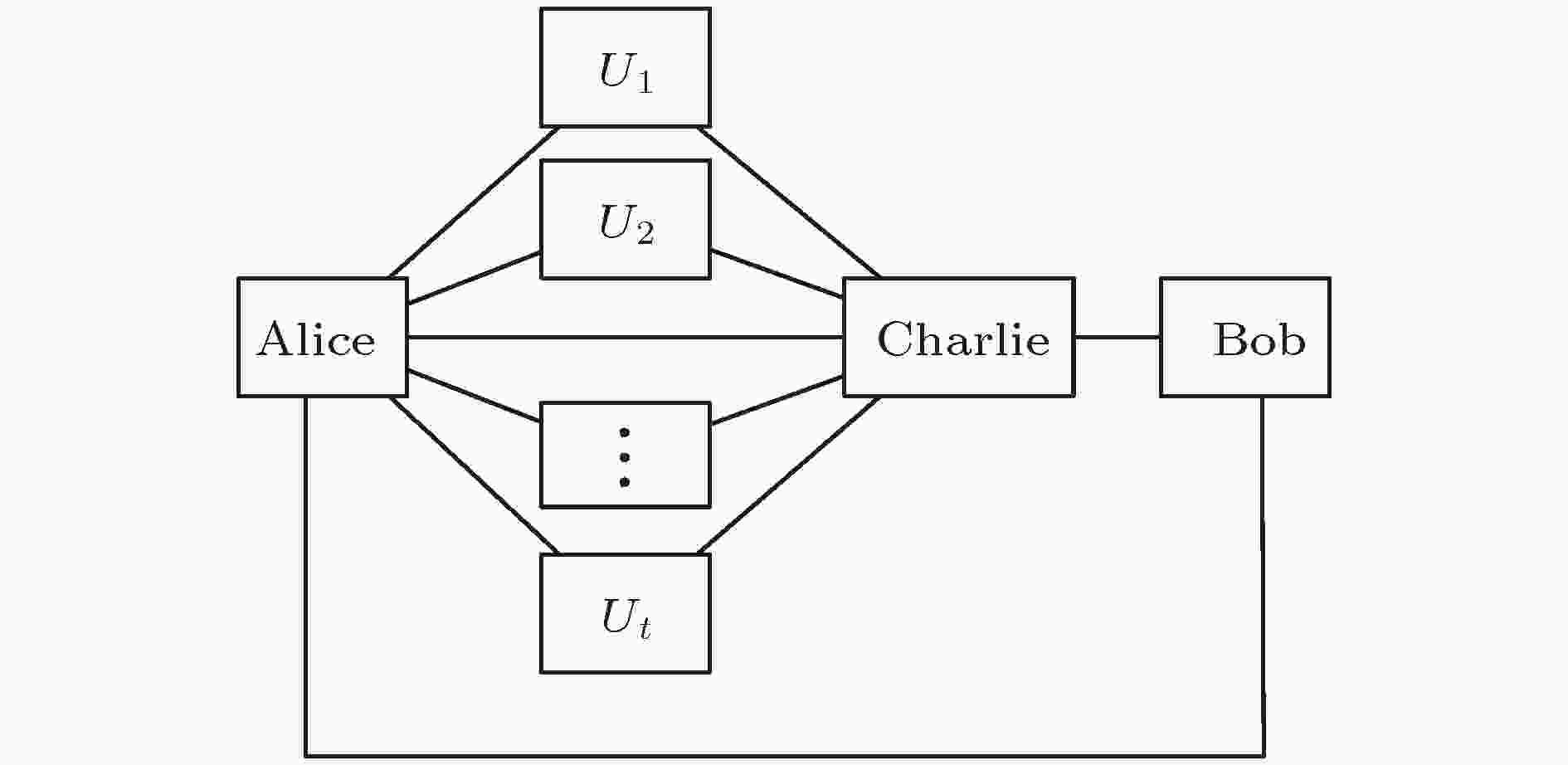
2019, 68 (7): 070301.
doi: 10.7498/aps.68.20182044
Abstract +
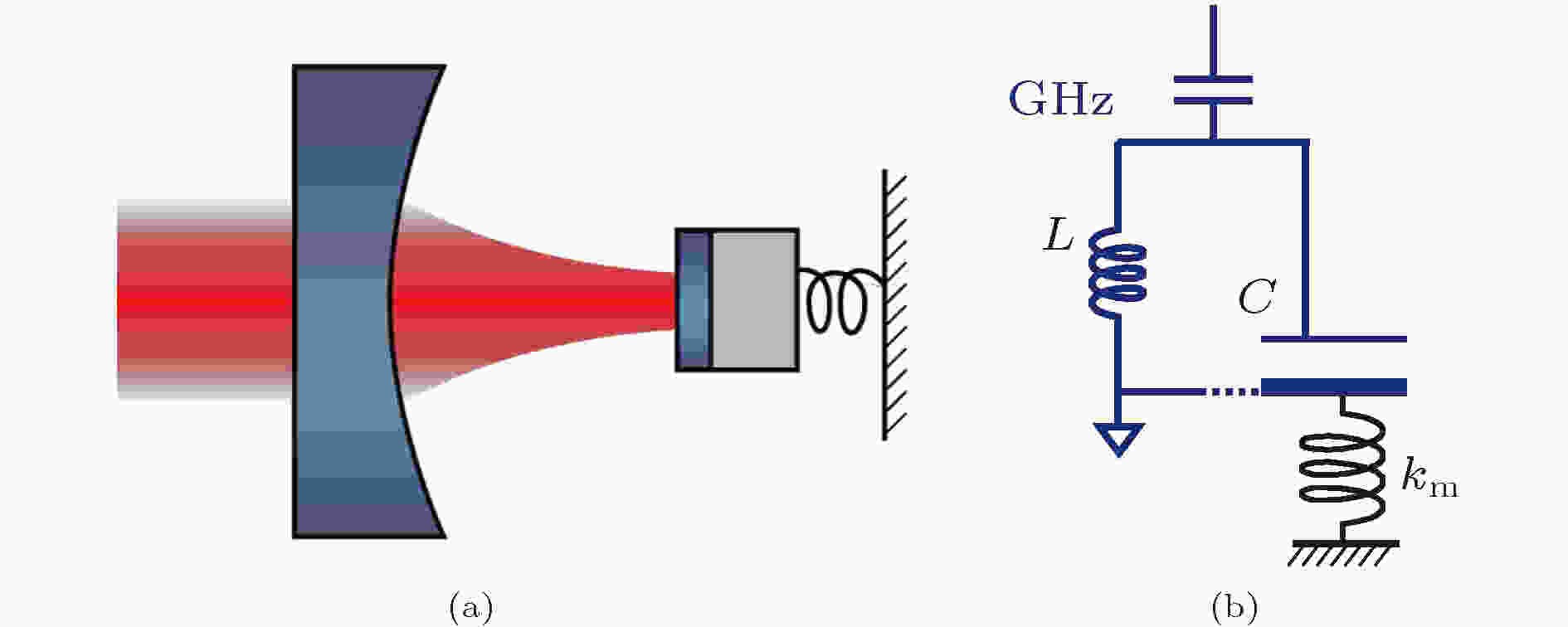
2019, 68 (7): 070302.
doi: 10.7498/aps.68.20191981
Abstract +
Based on the characteristics of superposition, entanglement, non-locality and non-clonality of quantum mechanics, quantum information science can break through the physical limits of classical information and open up a new information processing function different from classical electromagnetic application methods. Due to the advantages of high-energy single photon in practical applications, the research and application of optical quantum information technology dominates the development of current quantum information technology. However, the free-space transmission of light waves is greatly affected by weather conditions and atmospheric particles. Comparing with other wave bands, classical microwave signal shows good penetration ability when transmitting in free space. By introducing quantum mechanics, microwave signal also exhibits non-classical merits. As quantum microwave signal inherits both classical transmission performance and quantum non-classical features, it can be utilized as a significant signal source for diverse applications in microwave domain, such as quantum communication, quantum navigation and quantum radar, which are based on quantum technologies in large scale and dynamic free space transmission. There are three main experimental platforms on which quantum microwave is studied and produced. They are cavity quantum electrodynamics(C-QED) system, circuit quantum electrodynamics(c-QED) system, and cavity electro-opto-mechanical(EOM) system, involving with several nonlinear effects such as Kerr effect, Casimir effect, three-wave mixing, etc. In this paper, the setups of these platforms and the preparation principles are introduced. Meanwhile, the preparation principles and methods of microwave single photon, entangled microwave photons, squeezed microwave fields and entangled microwave fields are summarized and analyzed in detail from three aspects. The present status of experimental progress in the relevant fields are summarized and listed as well. Besides, key problems in the application of quantum navigation in free space utilizing quantum microwave are probed. Among them, the most pressing ones are preparation ability, decoherence in transmission and detection of entangled quantum microwave signals, which are also discussed and analyzed in this paper. Finally, we look forward to the future development of quantum microwave technology. It mainly consists of manufacturing microwave detectors with high efficiency, designing thermal photon filters, and developing suitable antennas. We hope that this study can provide useful reference for scholars who are engaged in or interested in research related to quantum microwave technologies.

2019, 68 (7): 070601.
doi: 10.7498/aps.68.20181860
Abstract +
Aiming at the high requirement for pulse-repetition frequency of the existing single-beam synchronous scanning circumferential detection, which is difficult to use practically. The method of single-beam expanding scanning laser circumferential detection is proposed. Based on the principle of single-beam expanding scanning laser circumferential detection, the mode of scanning has an inherent defect of periodic detection blind area in the detection field. The method of one-way spreading laser line beam into fan-shaped beam is proposed. The analytical expression of the lowest scanning frequency and the pulse frequency are derived. Echo characteristics of cylindrical target and the section attenuation coefficient are analyzed. Mathematic model of cylindrical target echo power of pulsed expanding laser beam is established. The mathematical model of section attenuation coefficient of cylindrical object is established, and the variation of the section attenuation coefficient when the center line and the edge of the beam have different positions relative to the cylindrical target is analyzed. The expression of the position having the smallest section attenuation coefficient and the expression of largest angle between the adjacent pulse laser beams are obtained, then the influence of system parameters on the section attenuation coefficient is also discussed. The emphasis is placed on the influence of pulse frequency, beam angle and incidence angle on the ability to detect different diameter targets. As the laser pulse frequency increases, the detectable target diameter is smaller and the detection ability is stronger. Increasing the beam angle and lowering the laser incident angle are beneficial to reducing the minimum laser pulse frequency required to discover the target. The methods of calculating maximum beam angle and minimum pulse frequency under typical conditions of the detection system are presented. When the incident angles are ${\text{π}}/3$ , ${\text{π}}/4$ and ${\text{π}}/6$ , the maximum beam angle and the lowest pulse frequency are calculated for a cylindrical target with a diameter of 0.18 m at a detection distance of 6 m, the minimum pulse frequency decreases effectively after beam expansion. The results show that the pulse repetition frequency will be effectively reduced by slightly expanding the beam. This study may provide theoretical basis for designing and optimizing the single-beam pulsed laser circumferential detection.
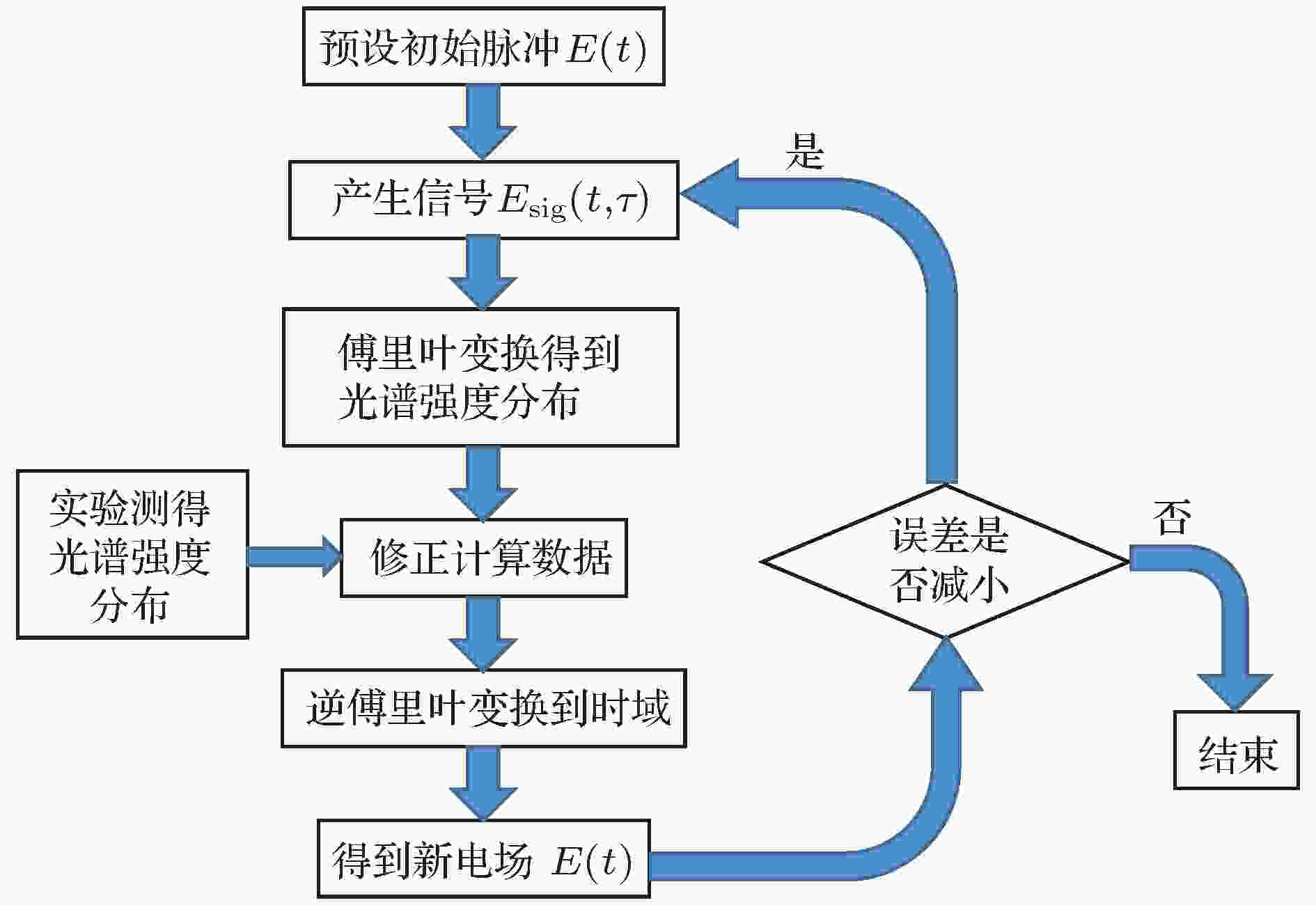
EDITOR'S SUGGESTION
2019, 68 (7): 070602.
doi: 10.7498/aps.68.20190165
Abstract +
Femtosecond pulse measurement of ultrafast spectrum is one of the important research directions in the ultrafast laser field. The conventional femtosecond pulse autocorrelation method is implemented by measuring the autocorrelated frequency-doubling signal, and the frequency-doubling signal has wavelength selectivity, so the femtosecond pulse measurement for the case of different central wavelengths needs to replace different frequency-doubling crystals, which is very inconvenient. This paper reports a kind of modified transient grating frequency resolution optical gating for measuring the femtosecond pulses. The method combines frequency-resolved optical gating (FROG) method with four-wave mixing. Its basic process is to divide the pulse to be measured into three beams. Two of the pulses can reach spatiotemporal coincidence on optical medium through precise delay control and focus. The other pulse interacts with the transient grating, and serves as the detection light to produce signal light. The spectrum and delay time of the signal light are measured by a spectrometer, and the spectrum and electric field information of the femtosecond pulse to be measured are obtained through the inversion iterative algorithm. Because this method only needs the power density of the measured light to reach the third-order nonlinear effect, it can be applied to the femtosecond pulse measurement of any central wavelength. We use this method to measure the femtosecond pulses with the central wavelengths of 800 nm and 400 nm respectively, and the ultra-wide spectrum femtosecond pulses with the period magnitude of sub-10 fs, and compare the measurement results with the results obtained with the conventional interferometric autocorrelation instrument. They are basically consistent. The experimental results show that our frequency-resolved optical switching method based on transient grating is very effective for measuring the femtosecond pulses with different central wavelengths and pulse widths.

2019, 68 (7): 070701.
doi: 10.7498/aps.68.20181961
Abstract +
It is of great theoretical and practical significance to study the regulation of the structure, morphology and properties of nanomaterials by using high voltage electric field in the field of functional materials. Here, ZnO nanocrystalline powders are synthesized under the condition of high voltage electric field. The effect of electric field on the structure, point defect and Raman spectrum of ZnO is studied.The structure, Raman shift and defect distribution of the product are characterized by (XRD), scanning electron microscope (SEM) and Raman spectroscopy (Raman spectroscopy).The results show that the complete crystallization time and temperature of zinc oxide under high voltage electric field are longer and higher than those without electric field. The direct current electric field can significantly promote the nucleation of zinc oxide in the precursor and reduce the rate of crystallization.The morphologies of ZnO obtained under different electric field intensities are obviously different. At a lower electric field intensity, ZnO presents lamellar or stripy morphology that is formed by many 50 nm-diameter nanoparticles. At a higher electric field intensity, ZnO exhibits short conical particles. It can be inferred that the high voltage electric field inhibits the growth of zinc oxide along the c axis (the strongest polar direction).The Raman spectra of the cathode surface and the anode surface showing obvious difference after the nano-ZnO powder has been polarized in the DC electric field.The intensity of the second-order optical phonon mode A1(LO) on the anode surface at 1050 cm–1 increases significantly under the condition of obvious leakage current, and the ratio (I1/I2) of Raman intensity (I1 = 438 cm–1 and I2 = 1050 cm–1) is linearly related to the field strength of the polarized electric field.When the positive and negative sides of the sample disc turn over, the 1050 cm–1 peak increases on the anode surface and tends to disappear on cathode surface.The zinc vacancies with negative charge move toward the anode and the concentration of zinc vacancies on one side of the anode increases significantly, which makes the surface of zinc oxide nanoparticles in the local area of the anode surface exhibit obvious negative electric properties, and increases the local electric field significantly to form a double Shaw base barrier.The Raman shift of 1050 cm–1 belongs to the second order optical phonon A1 (LO) vibrational mode, which is usually in inactive or silent state. When the current passes through, the grain boundary double Schottky barrier is established, which enhances the vibration of the A1 (LO) phonon and increases its Raman frequency shift.It can be concluded that the enhancement of the 1050 cm–1 Raman peak on the anode surface is related to the redistribution of defects in ZnO grains and the double Schottky barrier.
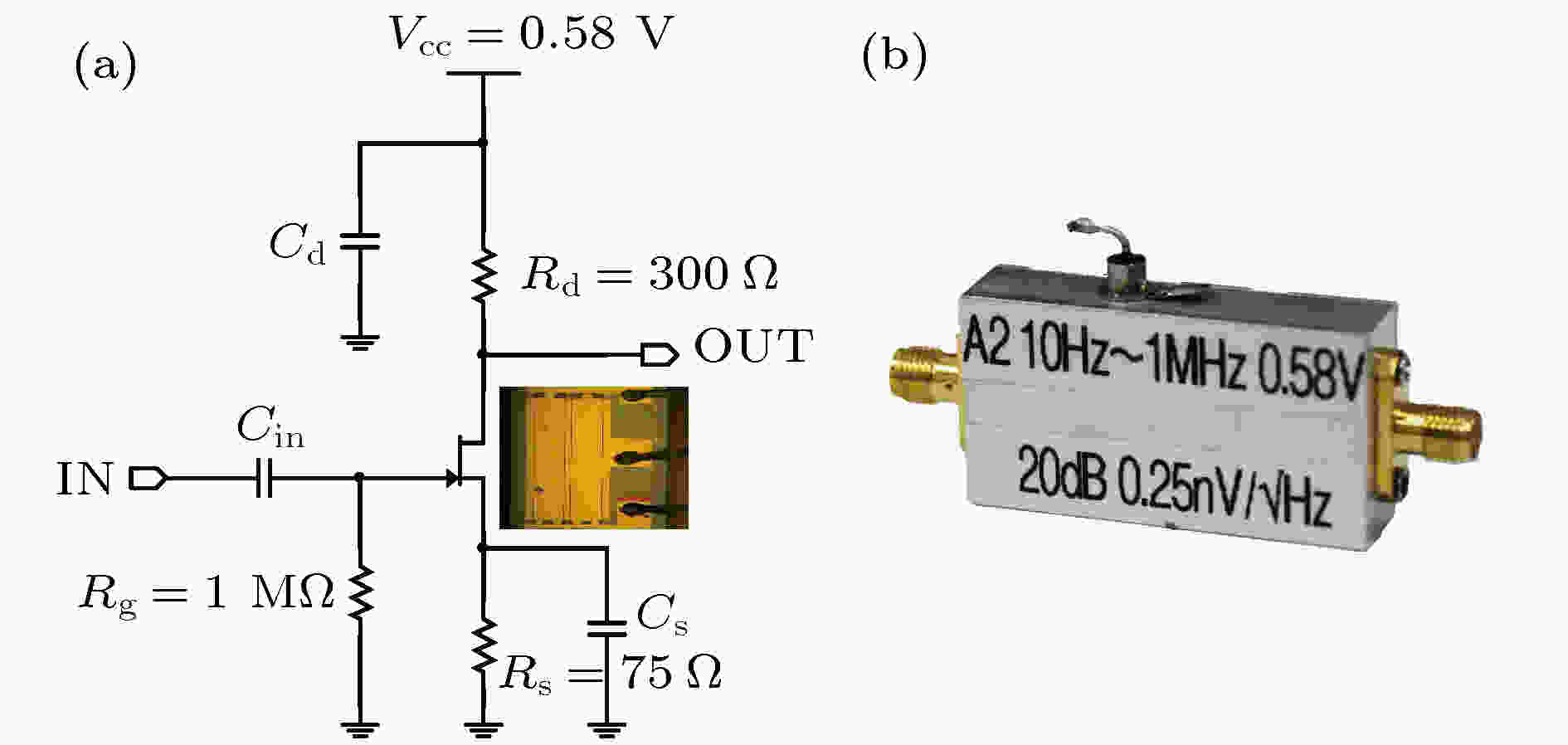
COVER ARTICLE
2019, 68 (7): 070702.
doi: 10.7498/aps.68.20190114
Abstract +
Traditionally, electrical noise is considered as an interference source for low level measurements. Shot noise is the current fluctuation caused by the discreteness of electrons. In a mesoscopic system, shot noise is sensitive to the interaction of charge carriers. Since the 20th century, it has been found that the shot noise measurement can provide the information about quantum fluctuations, which cannot be measured with traditional transport measurement method. It is usually difficult to measure weak noise signal at ultra- low temperature due to technical difficulties. It is necessary to mount a cryogenic preamplifier close to the sample to improve signal-to-noise ratio and to increase the bandwidth. Therefore, the ultra-low background noise and the power consumption of the amplifier should be used. In this report we present a shot noise measurement system at dilution refrigerator temperatures. We also introduce and analyze the noise model of our shot noise measurement system. With customized high electron mobility transistors, we make a series of ultra-low noise cryogenic preamplifiers. All the electronic components of the amplifier are packed into a shielding box, which makes the installation of the cryogenic amplifier more convenient. The amplifier is mounted on the 4 K stage of a dry dilution refrigerator and the total power consumption is less than 0.754 mW. The gains and the background noises of the amplifiers are calibrated with the Johnson-Nyquist noise of the combination of a superconducting resistor and a normal resistor at various temperatures. The measured input referred noise voltage can be as low as 0.25 nV/√Hz. In this report, the performance of the system is demonstrated by the shot noise measurement of an Al/AlOx/Al tunnel junction at various temperatures. Above the superconducting transition temperature of aluminum, the measured Fano factor of the system is very close to 1, which is in a good agreement with the theory prediction.
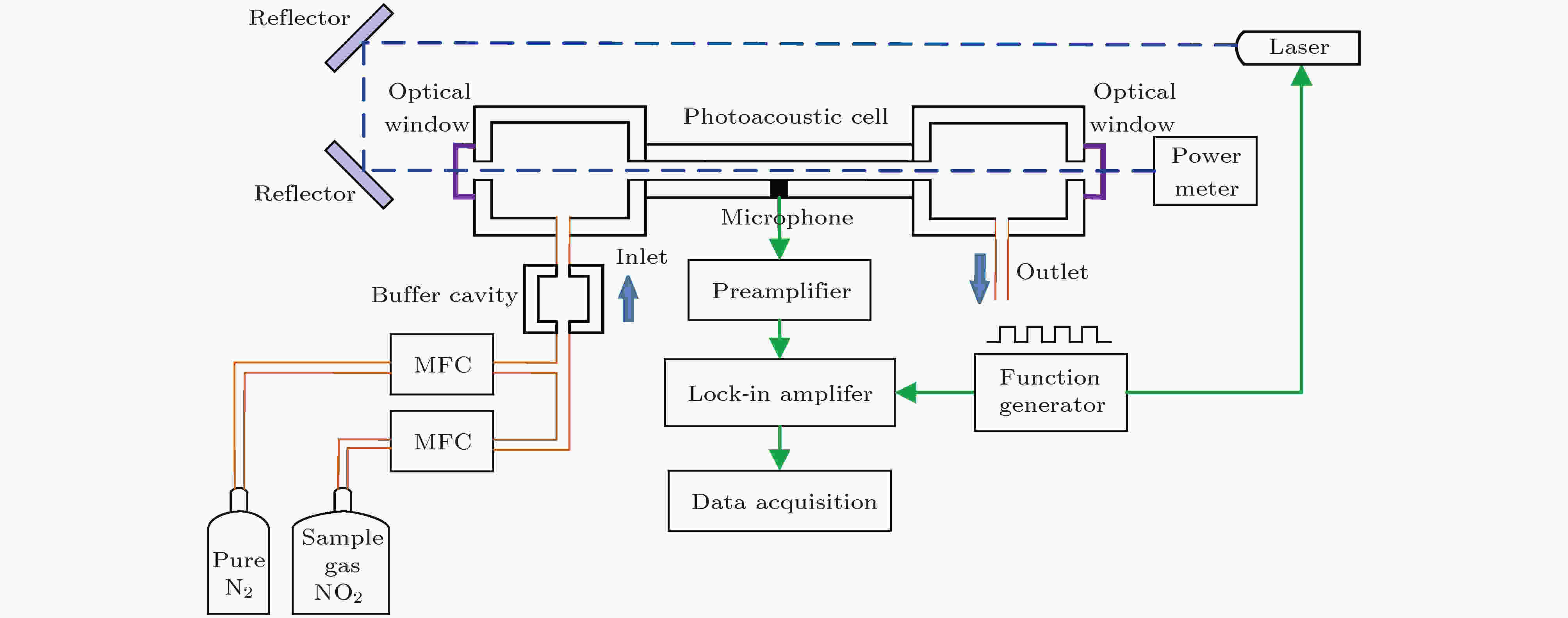
2019, 68 (7): 070703.
doi: 10.7498/aps.68.20182262
Abstract +
Photo-acoustic technology based on a low power blue diode laser for measuring the ppb level NO2 is presented in this paper. A low-cost NO2 measurement system based on traditional photo-acoustic technology is established. The 405 nm blue diode laser with an external modulation is used as a light source. The central wavelength of the laser is 403.56 nm, the half-peak full width is 0.84 nm, and the power is 65.3 mW. The effective absorption cross section of NO2 is obtained, and the interference of the water vapor and other trace gasisinvestigated. The resonant frequency is tested to be 1.35 kHz by frequency scanning fitting. An internally polished and coated poly tetra fluoroethylene aluminum cylindrical cavity is used as a photo-acoustic resonator (the inner diameter is 8 mm and the length is 120 mm). The influence factors caused by cavity parameters, optical windows and power supply are studied. The system is optimized to reduce background noise and improve signal-to-noise ratio. Then the noise signal is dropped to 0.02 ${\text{μV}}$ . An additional buffer chamber is integrated on the original buffer chamber to form a two-level buffer. The two-stage buffer structure significantly suppresses the effects of airflow noise and improves the system stability. The slope of the calibration curve of the system after linear fitting is 0.016 ${\text{μV/ppb}}$ , and R2 is 0.998. The NO2 detection limit of system is 2 ppb (3$\sigma$ ) with an average time of 60 s. To verify the results of the system, a diode laser cavity ring-down spectroscopy system (CRDS system, using a 409 nm the diode laser, with a system detection limit of 6.6 × 10–1) is used to measure ambient NO2 simultaneouslyon Lake Dong-Pu in western Hefei, Anhui Province, China. During the experiment, the measured NO2 concentration ranges from 8 to 30 ppb, with an average concentration of 20.8 ppb. The results of two systems have good consistency:alinear fitting slope of 0.94 ± 0.009, an intercept of 1.89 ± 0.18 and acorrelation coefficient of 0.87. The experimental results show that the system can realize the low-cost on-line detection of the ppb level NO2, and it can also be used for the real-time detection of NO2 concentration field.

2019, 68 (7): 073201.
doi: 10.7498/aps.68.20182283
Abstract +
A narrow-linewidth continuous-wave single-frequency tunable 318.6-nm ultraviolet laser system with watt-level output power is developed in our experiment based on well-developed fiber lasers, fiber amplifiers, and efficient laser frequency conversion technique. Cesium 6S1/2—nP3/2 (n = 70—94) single-photon Rydberg excitation in a room-temperature cesium atomic vapor cell is realized by using our ultraviolet laser system. The single-photon Rydberg excitation signal is obtained via the V-type three-level atomic system which contains 6S1/2 (F = 4) ground state, 6P3/2 (F = 5) excited state and one of nP3/2 (n = 70—94) Rydberg states. When cesium atoms populated on the ground state are partially excited to Rydberg state by the ultraviolet laser, absorption of 852.3-nm probe beam which is locked to 6S1/2 (F = 4)—6P3/2 (F ′ = 5) hyperfine transition will decrease. In this way, the cesium Rydberg states are detected. The quantum defects for cesium nP3/2 (n = 70—94) Rydberg states are experimentally measured with a high-precision wavemeter. The variation trend of experimentally measured data deviates from that of calculated values. Due to the fact that the cesium vapor cell is positioned in a magnetic shielding tank, the Zeeman effect can be ignored. Considering that the polarizability of Rydberg atoms is proportional to (n*)7, in which n* is the effective principal quantum number, the Rydberg screen effect of cesium atomic vapor cell cannot completely protect cesium atoms from being perturbed by an external DC electric field. Therefore the residual DC electric field existing inside the cesium vapor cell will have a significant influence on quantum defect measurement of Rydberg atoms. Using the theoretical model of Stark effect and the relationship between polarizability of Rydberg atoms and the effective principal quantum number n*, the corrected experimental value of quantum defect for cesium nP3/2 (n = 70—94) Rydberg states is found to be ~(3.5591 ± 0.0007). The corrected experimental value of quantum defect is consistent with the calculation.
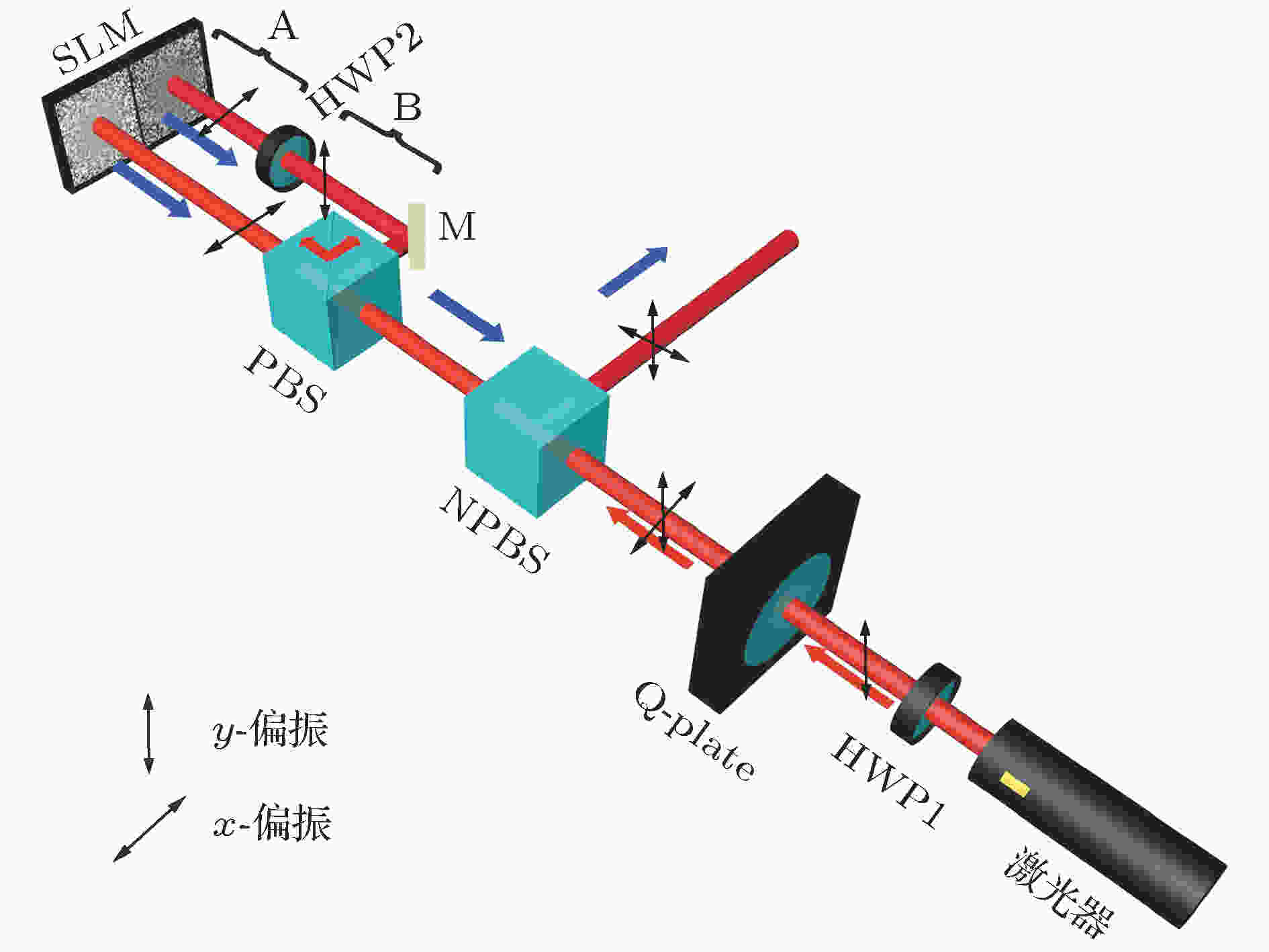
2019, 68 (7): 074201.
doi: 10.7498/aps.68.20182289
Abstract +
Since the unified theory of coherence and polarization for partially coherent vector beams was proposed by Gori and Wolf, the characterization, generation and propagation of partially coherent vector beams have been extensively studied. During the last decade, partially coherent vector beams with non-uniform polarization, also referred to as cylindrical vector partially coherent beams, have gained more and more attention. It was found that the intensity profile of focused azimuthally/radially polarized beam could be shaped by varying its initial spatial coherence. This characteristic may have potential applications in material thermal processing and particle trapping. Until now, there have been several reports concerning the generation of cylindrical vector partially coherent beams. However, in most of these reports a ground-glass diffuser was used, which generally restricts the generation of shell-model sources. In this paper, we theoretically and experimentally investigate the generation of radially polarized partially coherent beams with non-uniform correlation. According to the relation between phase correlation and optical coherence, we theoretically investigate the 2 × 2 cross-spectral density matrix and the coherence distribution of our generated non-uniformly correlated radially polarized partially coherent beams. In experiment, we generate dynamic random phase patterns with uniform distribution in time and inverse Gaussian distribution in space. A complete coherent radially polarized beam is divided into two parts by a polarizing beam splitter, i.e., the transmitted x-polarization component (HG10 beam) and the reflected y-polarization component (HG01 beam). The two orthogonally polarized components are respectively modulated with the two halves of a single phase-only liquid crystal spatial light modulator, thus generating a radially polarized partially coherent beam. We measure the correlation distribution of the generated beam in Young’s two-pinhole experiment. It is shown that the experimental observations are in agreement with our theoretical analyses. The generated partially coherent beam has an un-uniform correlation structure, and its coherence degree may be controlled by varying the Gaussian modulation half-width of the random phase. Our experimental results have also shown that the intensity profile of the radially polarized partially coherent beam can be modulated with the Gaussian modulation half-width. With the increase of Gaussian modulation half-widths and the gradual decrease of coherence degree, the intensity profile gradually transforms from a dark hollow beam profile into a flat-topped-like beam profile. The radially polarized partially coherent beams with non-uniform correlation may have some applications in optical manipulation and material thermal processing.
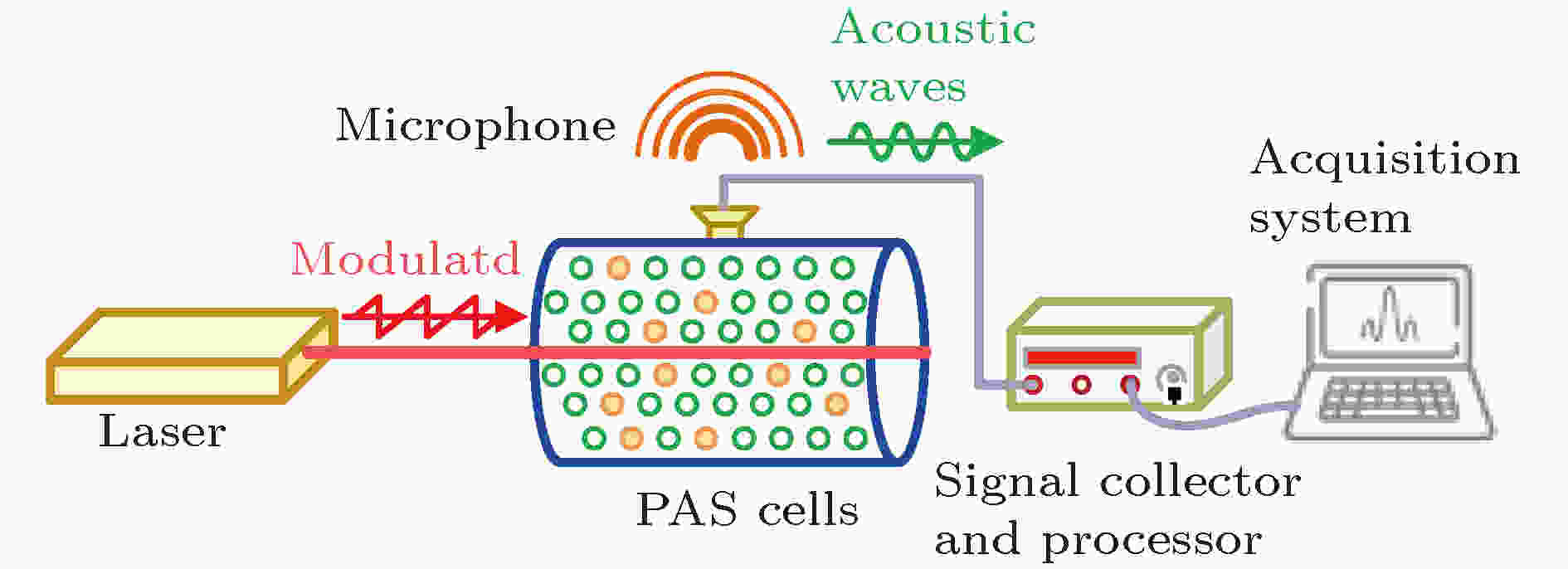
2019, 68 (7): 074202.
doi: 10.7498/aps.68.20182084
Abstract +
Photoacoustic spectroscopy (PAS) offers intrinsic attractive features in the detection of trace gases, including ultra-compact size and background-free absolute absorption measurement. The photoacoustic (PA) cell is a key component in the PAS system, which determines the performance of the PAS sensor. In this paper, a cylindrical resonant photoacoustic cell is taken as a research target. Based on the fundamental theory of acoustics and absorption spectrum, a mathematical model of acoustic field excitation in the PA cell is established. The acoustic resonance frequency, quality factor and cell constant of the PA cell are used as three key parameters to describe its performance. By employing advanced computer numerical calculation and finite element simulation technology, we establish a simulation model and impose the excitation load and boundary conditions on the model according to the actual working conditions. Then we calculate and simulate the acoustic modal of the PA cell, and the first eight acoustic modal values of the cavity and the visual vibration model of the acoustic pressure are obtained. With considering the acoustic loss, the thermo-acoustic coupling multi-physical field simulation of photoacoustic cell is carried out. Comparing with analytical calculation and experiment results, the reliability and feasibility of using numerical simulation method to calculate the relevant parameters of photoacoustic cell are demonstrated. In order to obtain a better structure of photoacoustic cell, an optimization algorithm combining response surface proxy model with multi-objective genetic algorithm is proposed. We try to change the shapes of both ends of the resonator in the original photoacoustic cell into the shape of the bell mouth. Take into account the case that the longitudinal acoustic normalization frequency of the PA cell is larger than 1000 Hz, Pareto optimal solution set with the maximum quality factor Q and cell constant Ccell of the PA cell is obtained. The results show that the maximum error between the predicted and simulated values of the proxy model of the PA cell Q and Ccell is only 1.3%. Comparing with the original PA cell, the Q factor and the Ccell of the optimized PA cell are increased by 48.9% and 34.4%, respectively. The performance of the optimized photoacoustic cell is obviously improved. The proposed algorithm of photoacoustic numerical simulation combined with multi-objective optimization design can provide helpful reference for designing the PA cell in PAS sensor development.

2019, 68 (7): 074203.
doi: 10.7498/aps.68.20181801
Abstract +
In order to obtain a new imaging strategy of the Fourier telescope (FT) with a better imaging quality and a less imaging time, we optimize and compare three down-sampling imaging strategies in this paper: the compressed sensing method (CS), the low-frequency full sampling method (LF) and the variable-density random sampling method (VD), which are different from the traditional Fourier telescope in both of the image quality and the imaging time. The analytical methods are as follows: based on the target’s spectral data obtained from the field experiment of traditional FT, three down-sampling methods (LF, VD and CS) are used to reconstruct the target’s images according to their own sampling modes and reconstruction methods, respectively; the differences between the three down-sampling methods and the traditional FT regarding the image quality are compared by the instinctive observation and the Strehl ratio; based on the analysis of the imaging time, the differences between the three down-sampling methods and the traditional FT regarding the imaging time are preliminarily compared. The analysis shows that: 1) the image quality of the compressed sensing method is better than that of the other two down-sampling methods (LF and VD), slightly lower than that of the traditional imaging; 2) although the image quality of the compressed sensing method is slightly lower than that of the traditional FT, its imaging time is much lower than that of the traditional FT; 3) the field data used in the analysis contain noises, which means that the reconstruction methods of the above three down-sampling strategies have a better robustness to the noises. Based on the above results, it can be seen that the Fourier telescope based on compressed sensing (CS-FT) is an excellent imaging strategy which can greatly reduce the imaging time in the condition with actual noises.

2019, 68 (7): 074204.
doi: 10.7498/aps.68.20182296
Abstract +
Optical resonators play an active role in fundamental research and applications in atomic fine spectra, laser generation, precision measurements, and quantum information processing because of their high-resolution spectra and strong optical field enhancement. The fiber ring resonators, as a derivative of the resonant resonators, have the advantages of simple structure, small size, stable performance and easy integration. The fiber ring resonators are widely used in fiber lasers, optical communication devices, optical fiber sensing, etc. In this paper, we demonstrate the characteristics of a fiber ring resonator based on a tunable fiber beam splitter experimentally. Control of under-coupling, critical coupling and over-coupling state of the fiber ring resonator can be achieved by adjusting the splitting ratio of the tunable fiber beam splitter. The relationship between the minimum resonator reflectance and resonator loss is given. The intrinsic decay rate of the fiber ring resonator is ${\kappa _0}{\rm{ = }}2{\text{π}} \times \left( {1.60 \pm 0.03} \right)\;{\rm{ MHz}}$ , and the quality factor is $Q = \left( {1.10 \pm 0.02} \right) \times {10.8}$ . The resonance frequency of the fiber ring resonator is controlled by stretching the fiber. The fiber resonator is kept straight and fixed on a self-made U-shaped holder by gluing two points. A piezoelectric transducer is used to change the distance between the two glued points. The fiber ring resonator length is changed and controlled when the fiber is stretched. The Pound-Drever-Hall technique is used to lock the resonator to resonance with the laser. The phase of the laser beam is modulated by using an electro-optical modulator, and two sidebands of the laser frequency are generated. Due to the phase sensitivity of the fiber resonator, the reflected light of the fiber resonator with an intensity modulation is observed when the fiber ring resonator is locked. The intensity modulation is caused by the interference between the resonance frequency and the sidebands of the fiber ring resonator. The reflected spectrum of the fiber ring resonator carries the same-frequency modulation as the phase modulation. This is a disadvantage for the usage of the fiber ring resonator. Thus, we reduce the phase modulation power to reduce the intensity modulation of the resonator reflectance. The linear relationship between the phase modulation power and the intensity modulation of the resonator reflectance caused by the phase modulation is obtained. The fiber ring resonator can be locked when the phase modulation power decreases to –9 dBm. The fiber ring resonator has laid a solid experimental foundation for experimental research on the interaction between the fiber ring resonator and quantum emitters such as atoms and color centers in diamond.

2019, 68 (7): 074205.
doi: 10.7498/aps.68.20181825
Abstract +
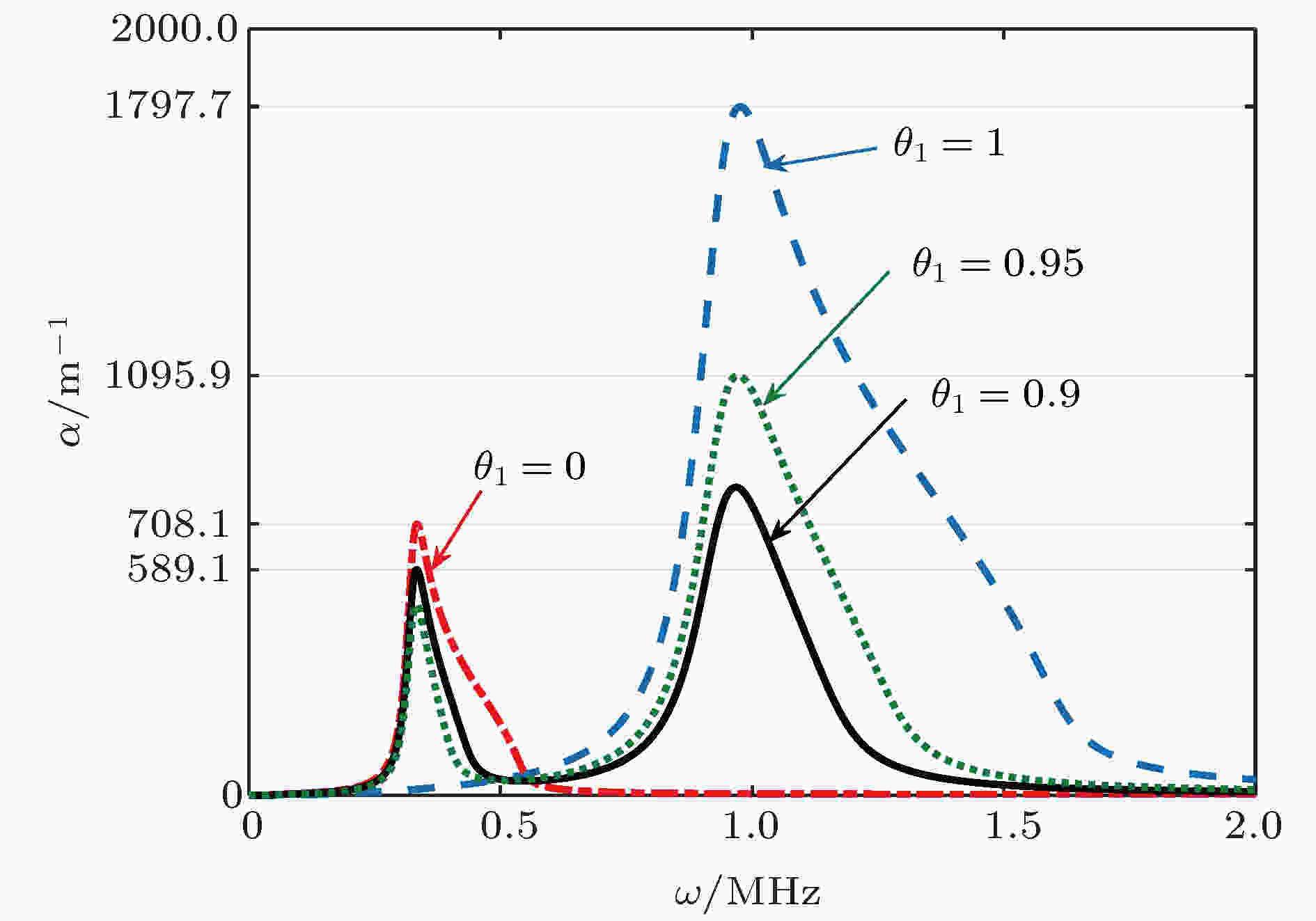
2019, 68 (7): 074301.
doi: 10.7498/aps.68.20182299
Abstract +
There is the resonant propagation phenomenon of acoustic wave in bubbly liquid, i.e., the attenuation coefficient and the velocity of acoustic wave in range of resonant frequencies of bubbles can become very large. In previous papers, generally adopted was a simplified assumption that there is a single type of bubble in a liquid. It restricts our understanding of the resonant propagation phenomenon. In this paper the resonant propagation of acoustic wave in a liquid with mixed bubbles is studied. Here, static radii of bubbles are different from each other. Research results show that there is a restraining effect of the resonant propagation of acoustic wave in liquid with mixed bubbles. The attenuation coefficient and the velocity of acoustic wave in the liquid with mixed bubbles are obviously less than those in the liquid containing bubbles with the same static radius. The nature of the restraining effect is that the resonant vibration of bubbles is weakened due to the interaction between bubbles with different static radii. Some important properties of the restraining effect are investigated for all kinds of liquid systems with mixed bubbles. Moreover, the effect of the viscosity and the rate of cavitation on the restraining effect are also studied. Research results are shown as follows. 1) Comparing with bigger bubbles, resonant characteristic quantities (such as the attenuation coefficient and the velocity of acoustic wave) caused by smaller bubbles can be reduced more obviously; 2) the efficiency of the restraining effect increases with the number of types of bubbles increasing, however, it will gradually reach to a stable value when the number of types of bubbles is large; 3) the bandwidth of the resonant absorption of acoustic wave is dramatically affected by the distribution function of the percentage of the number of bubbles. The bandwidth of the resonant absorption will become large as the percentage of the number of smaller bubbles increases.
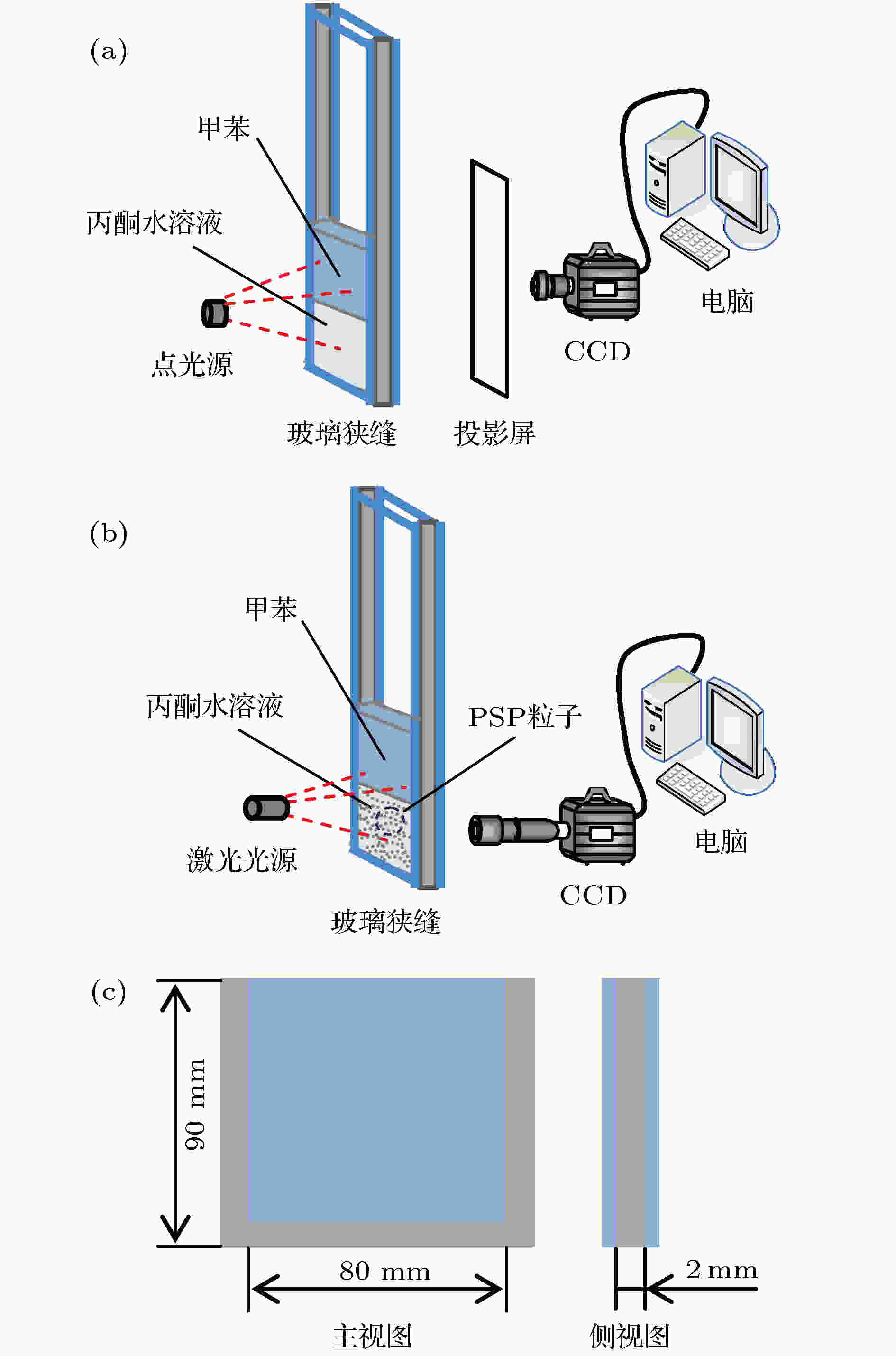
2019, 68 (7): 074701.
doi: 10.7498/aps.68.20181295
Abstract +
Rayleigh-Bénard-Marangoni convection (RBM convection) induced by the mass transfer has a great influence on the performance of real chemical engineering process. However, the researches of RBM convection characteristics during mass transfer across the interface in liquid-liquid system and their influence on the interface morphology are still limited. In this research, a visualization experiment via the amplified shadowgraph method is conducted to investigate the mass transfer in water-toluene-acetone system in a vertical slit. The convective structure of RBM and its evolution are visually observed. The effects of the initial acetone concentration of aqueous phase and toluene phase, and the thickness of toluene layer on the RBM characteristics and the morphology of the liquid-liquid interface are investigated. The experimental results show that these structures are induced by the interface tension difference along the interface and the vertical density difference caused by non-uniform mass transfer at the interface. As a result of the mass transfer at the interface, the density stratification occurs at the top of the aqueous phase, where the light liquid layer supports heavy one. In addition, non-uniform mass transfer produces perturbation at the top of the aqueous phase, which induces the Rayleigh-Taylor instability at the " interface” between the heavy and light liquid layer. Consequently, a wave-shaped-mound " interface” in the upper aqueous phase is formed as the heavy liquid comes down into the light one, and it can be further evolved into a plume flow with the enhancement of the imbalance between density and pressure at the " interface”. Due to the difference in mass transfer characteristic caused by different concentration gradients in the plume " interface”, the plumes can also evolve into weak plumes and strong plumes. Under the large acetone concentration gradient, a number of RBM convective structures are generated near the interface in a short time and the convective cloud is formed due to the dramatic interaction and coalescence between these structures. With the weakening of mass transfer, the convective cloud disappears and the strong plume is gradually formed. In addition, the strength of RBM convection is demonstrated to be positively correlated with the acetone concentration gradient across the aqueous solution- toluene interface. In addition, the roughness of the interface and its unsteady fluctuation grow up with the increase of acetone concentration gradient across the interface.

2019, 68 (7): 074702.
doi: 10.7498/aps.68.20181875
Abstract +
Drag reduction by riblets has drawn the attention of many researchers because of its low production cost and easy maintenance. But due to the fact that the rather low drag reduction riblets can offered, an easy modification to the structure of riblets to improve the performance would be more than necessary. In this work, an investigation of the influences on coherent structure of straight riblets and sinusoidal riblets (s-riblets) in a turbulent boundary layer (TBL) at various Reynolds numbers is carried out experimentally by using the time-resolved particle image velocimetry (TR-PIV). It is found that the skin friction of the turbulent boundary layer is reduced close to the wall, and the logarithmic velocity profile shifts upwards over riblets and s-riblets. The turbulence intensity and Reynolds shear stress are also reduced in the near wall region compared with the scenario of the smooth case, and a better performance on drag reduction is obtained over s-riblets. Coherent structures including hairpin vortex and low speed streaks are extracted over test plates by using the correlation coefficient and $\lambda_{ci}$ vortex identification method, to study the mechanism of drag reduction caused by riblets. It is shown that the spatial scale of coherent structure in streamwise and wall-normal direction decrease over riblets and s-riblets to various degrees, the inclination angle between the mainstream and coherent structure also decreases, meaning that the wall-normal movement and upwash motion are suppressed over riblets and s-riblets. Results from the conditional sampling method demonstrate that the induction of ejection and sweep motions by hairpin vortex are inhibited over riblets and hence the exchange of energy and momentum and the self-sustaining mechanism in turbulence are influenced. Furthermore, at the same $Re_{\tau}$ , the spanwise spacing of low speed streaks turns wider with wall-normal position increasing. At the same $ y^{+} $ , a larger spacing is seen over riblets and s-riblets, implying that spanwise movement of the streaks is restrained and hence becomes more stable.

2019, 68 (7): 075201.
doi: 10.7498/aps.68.20182138
Abstract +
The experimental study of laser-driven material state equation puts forward extremely high requirements for the uniformity and stability of the target spot intensity distribution, and these two characteristics greatly determine the accuracy and repeatability of the experimental results. In this paper, a beam smoothing scheme combining diffraction-weakened lens array (LA) with induced spatial incoherent (ISI) technique based on low-coherence laser is proposed to solve the problems, that is, the uniformity and stability of the target spot intensity distribution in the material state equation experiments driven with narrow-band coherent laser. The super-Gaussian soft aperture used in our scheme can improve the intensity fluctuation caused by the hard-edge diffraction of the lens elements, and the temporal smoothing technique, ISI, can reduce the interference effect between the lens array elements. The speckle patterns of target spot, which are caused by interference between beamlets and determine the high nonuniformity, will randomly reconstruct after each coherent time. The high-frequency components are further smoothed by the time-average effect. In broadband high-power laser devices, ISI can be combined with LA by making the lens elements with different thickness values. This scheme can enhance the focal spot uniformity and improve the tolerance of the system to the wavefront phase distortion. The influence of wavefront phase distortion on target surface uniformity and stability are analyzed. The simulation results show that this smoothing scheme significantly reduces the target spot nonuniformity, improves the tolerance of random wavefront phase distortion, and presents a uniform and stable target spot intensity distribution. The nonuniformity of target spot will be reduced to about 10% after 10 ps, and about 3% after 100 ps. In addition, statistical analysis shows that the peak-to-valley value and the nonuniformity of the target spot intensity distribution are strongly correlated with the gradient of root-mean-square of the wavefront phase distortion. Using this method, the tolerance range of the wavefront phase distortion can be given according to the requirements of the experiments, which has reference value for designing and optimizing the laser driver parameters in the state equation experiment.
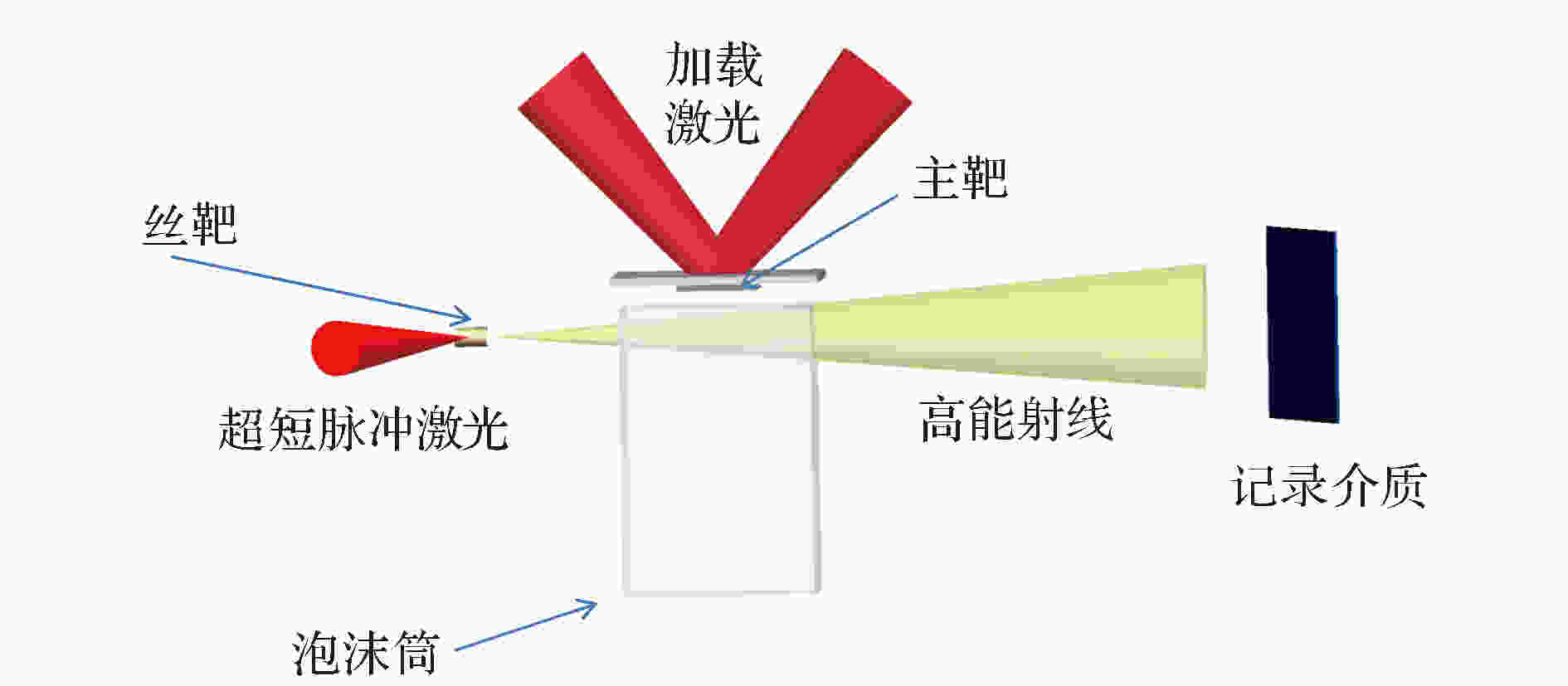
2019, 68 (7): 076201.
doi: 10.7498/aps.68.20182280
Abstract +
Micron-scale fragment ejection of metal is a kind of surface dynamic fragmentation phenomenon upon shock loading. The study of ejecta is crucial in many fields, such as inertial confinement fusion and pyrotechnics. Due to the particular advantages of laser experiments, a lot of studies of ejecta by strong laser-induced shock loading have been conducted in recent years. The shapes, size and mass of particle can be obtained via static soft recovery technique with foam. However, the stagnation and succedent mixing of the ejecta in the foam could not be deduced by this technique. To study the mixing between the ejecta and foam, a radiography experiment is performed by using the X-ray generated through the irradiation of picosecond laser on the golden wire. This radiography technique has not only high spatial resolution but also high temporal resolution. Two kind of experiments are designed and performed. In the first one, the tin sample and the foam are close to each other while a vacuum gap is arranged between them in the other one. The mixing process is analyzed with the determined areal density and volume density, as well as the results of recovery. The areal density of the front mixing area is similar to the scenario in the case with a vacuum gap, suggesting that the ejecta have not underwent a secondary fragmentation due to the collision with foam. Furthermore, the static recovery results show a different characteristic of penetration depth for the ejecta in the foam. When the tin sample is not close to the foam, the penetration depth in the foam increases with the loading pressure increasing. However, the penetration depth begins to decrease at a critical pressure after a brief increase, which is attributed to the interaction between the shock and the foam before the ejecta coming, and also to the ejecta size and composition. The shock pressure is high enough to change the foam performance, thus enhancing the stagnation ability for ejecta penetration. Moreover, the size and composition vary with loading pressure, thereby leading to the momentum change of the ejecta related to the penetration depth. In the future work, we will improve the field of view of the X-ray radiography to achieve a direct comparison between the dynamic results and the recovery results. Moreover, we will arrange perturbations at the interface to study the mixing between the micro-jetting and the foam and the interface instability.

2019, 68 (7): 076401.
doi: 10.7498/aps.68.20182188
Abstract +
The isothermal crystallization of amorphous Ag is investigated by a molecular dynamics (MD) simulation, and the heredity and evolution of different types of crystalline clusters aretracked and analyzed by a reverse tracking method of atom trajectories with the help of cluster-type index method (CTIM) based on Honeycutt-Anderson (H-A) bond-type index. According to the difference in the type of crystalline cluster and the linkage mode, i.e., vertex-sharing (VS), edge-sharing (ES), face-sharing (FS) and intercross-sharing (IS), a cluster analysis method which can efficiently characterize fcc single-crystal, fcc poly-crystal and fcc hydrid-crystal, is proposed. That is, the IS-linkage of fcc basic clusters, i.e., a fcc medium range order, is defined as a fcc single-crystal cluster. The extended cluster of fccbasic clusterslinked by ISand FS modes is named fcc poly-crystal clusters. In the case of IS-linkages, if the majority of core atoms arefcc atoms, the extended cluster composed of fcc, hcp and bcc basic clusters will be regarded as a fcc hydrid-crystal cluster. Moreover, a structural analysis method of critical nuclei distinguishing embryosis also developed in terms of the hereditary characteristics of various crystalline clusters. In this scheme, the extended cluster which has only transient heredity and no continuous heredity is defined as an embryo, while it will be named nuclei if part of core atoms in extended clusters can keep cluster type of atoms unchanged and be continuously passed down in the early stage of crystallization. Thus, corresponding to the onset time/temperature of continuous heredity, the critical nuclei of fcc singe-crystals, fcc poly-crystals and fcc hybrid-crystals can be identified and characterized. It is found that the nuclei of fcc crystalsemerge after the steep drop of total energy of system and before the abrupt increase of sizesof tracked clusters. And regardless of critical sizes or geometric configurations, an evident difference exists among fcc singe-crystal, hybrid-crystal clusters and fcc poly-crystal clusters, of which the fcc single-crystal nucleus is the smallest (~1.6 nm ×1.0 nm × 1.1 nm), followed by poly-crystal nucleus (~1.7 nm × 1.0 nm × 1.6 nm) and hydrid-crystal nucleus (~2.3 nm × 2.0 nm × 2.4 nm) in sequence. There are a few hcp and bcc atoms at surfaces, i.e. shells, of single-crystal and poly-crystal nucleus, but neither hcp nor bcc atom can be detected at the shell of fcc hydrid-crystal nucleus. And theconfiguration of fcc single-crystal, poly-crystal and hydrid-crystal critical nuclei are all non-spherical.

2019, 68 (7): 077101.
doi: 10.7498/aps.68.20190056
Abstract +
In a tungsten-based alloy system, the appropriate solute elements are selected to produce strong segregation effect to reduce the interfacial formation energy, which can effectively improve the mechanical property and thermal stability of the system. Based on the first principles calculation, the solute segregation model of tungsten-based alloys is constructed. The W-In alloy is taken for example to study the grain boundary segregation behavior and bonding characteristics of solute at different concentrations. The bonding of the W-In system is revealed from the electronic structure, and the variation of the interface stability of the W-In system with the solute concentration is predicted. Based on the electronic structure analysis of bond population, differential charge density and density of states, the bond transition characteristics of solute atoms in the W-In system in the segregation process are found, and the microscopic mechanism of the W-In bond transitioning from the ionic bond inside the grain to the strong covalent bond in the grain boundary region is elucidated: the difference between the grain boundary and the intragranular structure leads to a decrease in the valence state of the W atom in the grain boundary and the oxidizability is weakened, eventually leading to the W-In bond transition. The non-monotonic variation of the intrinsic segregation energy of the solute with the concentration of In in the W-In system is obtained. The mechanism of the influence of solute concentration on the intrinsic segregation energy is revealed by analyzing the bond interaction and energy: the solute concentration remarkably affects the bond strength before and after the W-In bond segregation, resulting in a significant decrease in the segregation ability when the solute concentration is close to 0.0976, and finally the variation of the segregation energy with solute concentration is obtained. Based on the analysis of the phase mechanical stability and the solute segregation in the grain boundary, without considering the vacancy concentration, the optimal solute concentration range and the range that needs to be circumvented in the W-In alloy system with high thermal stability are predicted by the calculations of the model, which are 0.106−0.125 and 0.0632−0.106, respectively. This study provides theoretical basis and quantitative guidance for designing and preparing the tungsten-based alloy materials with high thermal stability.
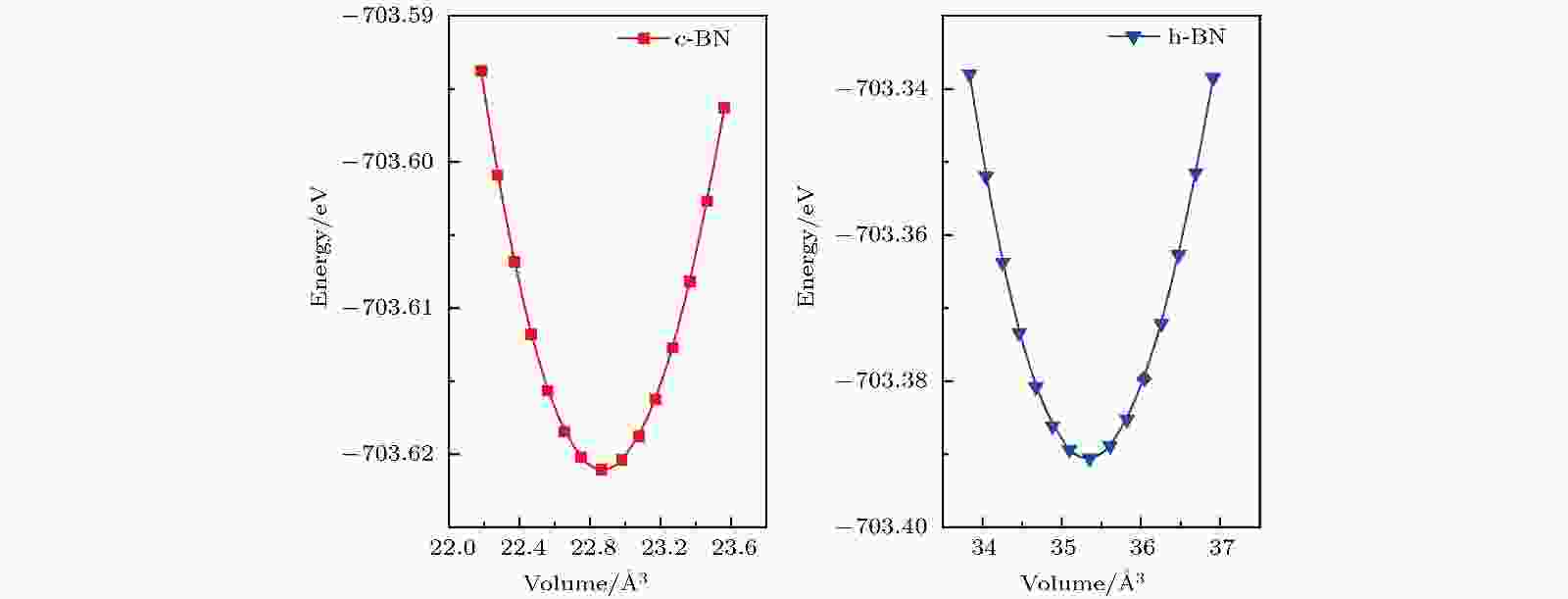
2019, 68 (7): 077102.
doi: 10.7498/aps.68.20182030
Abstract +
On the basis of the density functional theory of the first-principles, we employ the plane wave pseudopotential method and local density approximation to optimize the geometrical structure of cubic boron nitride and hexagonal boron nitride; then we study their mechanical properties, electronic structures and optical properties at zero temperature and zero pressure, and the thermodynamic properties at different temperatures and different pressures. By means of geometry optimization, we systematically investigate the elastic constant, bulk modulus, shear modulus, hardness and phonon spectrum for each of cubic boron nitride and hexagonal boron nitride. The results show that both cubic boron nitride and hexagonal boron nitride are structurally stable and brittle materials. Besides, cubic boron nitride is more stable than hexagonal boron nitride and it can be used as a superhard material. However, the thermal stability of hexagonal boron nitride is poor. The research results of electrical properties show that both cubic boron nitride and hexagonal boron nitride are indirect bandgap semiconductors, and the localization of cubic boron nitride is stronger than hexagonal boron nitride. The optical studies show that both cubic boron nitride and hexagonal boron nitride have good passivity to incident light. The c-BN is more sensitive to the incident light in high energy region. Last but not least, the thermodynamic properties of cubic boron nitride at high temperature and high pressure are also investigated. The relationships of thermodynamic expansivity, heat capacity, Debye temperature and Grüneisen parameter of c-BN with temperature and pressure are obtained. And the heat capacity of cubic boron nitride is found to be close to the Dulong-Petit limit at high temperatures. In this paper the relevant properties of cubic boron nitride and hexagonal boron nitride under high pressure are described theoretically, and a relatively reliable theoretical basis is provided for relevant experimental research.
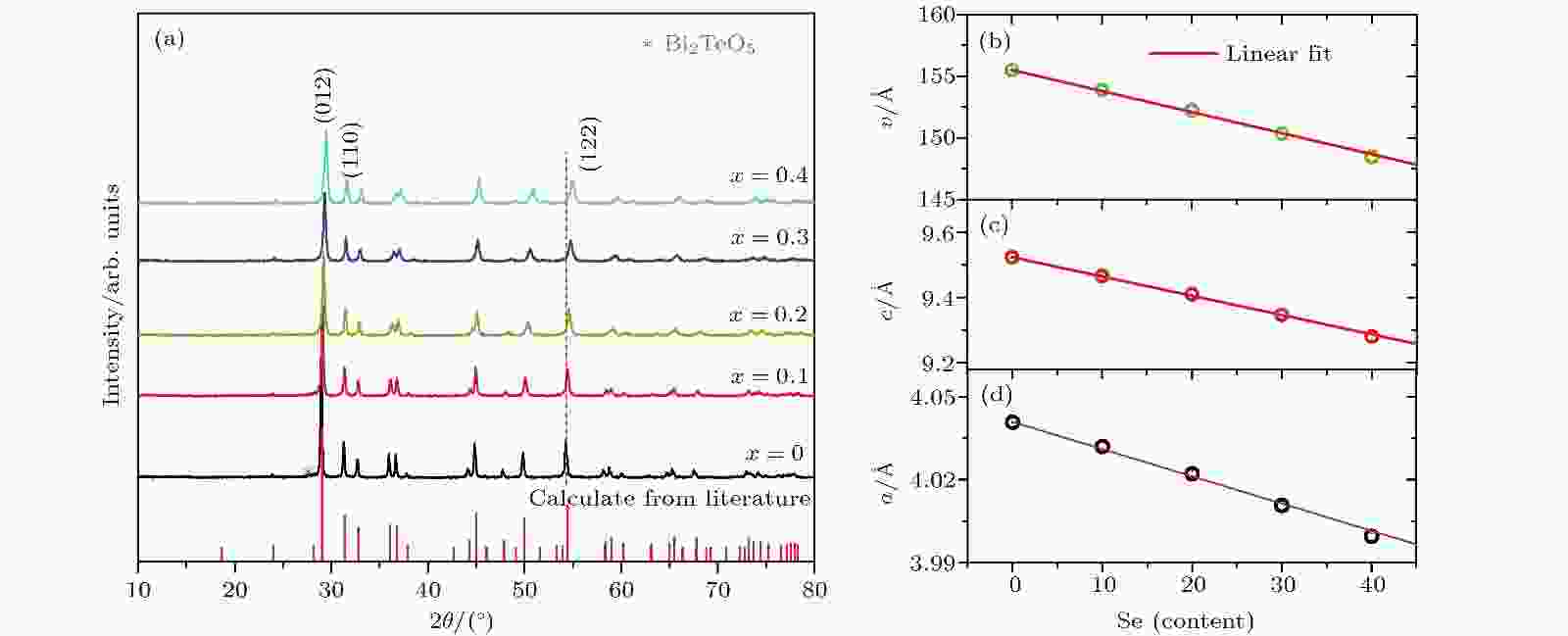
EDITOR'S SUGGESTION
2019, 68 (7): 077201.
doi: 10.7498/aps.68.20181850
Abstract +
Recently, layered oxychalcogenide has attracted significant scientific attention because of its intriguing electronic properties, intrinsically low thermal conductivity and, correspondingly, outstanding thermoelectric properties, of which the BiCuSeO possesses the best thermoelectric performance ever reported. For instance, the optimized zT value of BiCuSeO system reaches 1.5 at 873 K through dual-doping approach. Such a zT value is comparable to those of the state-of-art p-type lead chalcogenide thermoelectric materials. However, comparing with BiCuSeO compound, little effort has been devoted to the isomorphic analogue BiCuTeO. On the one hand, the BiCuTeO has a pretty small band gap (0.4 eV) which limits its working temperature range. On the other hand, numerous intrinsic Cu vacancies are present in BiCuTeO due to the weak Cu-Te chemical bonding, leading to an excessive carrier concentration. Thus, further increasing carrier concentration through doping will lead to a deterioration of electrical transport properties and thus reduce the zT value. Herein, we choose Se and partially substitute it for Te in the BiCuTeO to enlarge the band gap and reduce intrinsic Cu vacancies by strengthening the chemical bonding in the conductive layers. By combining solid-phase reaction with hot-pressed sintering, the BiCuTe1–xSexO (x = 0, 0.1, 0.2, 0.3, 0.4) bulk thermoelectric materials are prepared, and their microscopic morphology and thermoelectric transport properties are systematically investigated. Our experimental results show that the substitution of Se for part of Te results in strengthening chemical bonding in the conducting layer, enlarging the band gap, increasing the carrier effective mass, reducing the carrier concentration, and enhancing the carrier scattering. Therefore, the electrical conductivity dramatically decreases but the Seebeck coefficient significantly increases with Se content increasing, leading to the decrease of thermoelectric power factor. Furthermore, a slight reduction of the total thermal conductivity is realized by Se alloying due to the decrease of the electronic thermal conductivity. Consequently, the dimensionless figure of merit zT decreases with the Se content increasing because electrical transport properties are deteriorated seriously. Finally, the zT value of 0.3 at room temperature and 0.7 at 723 K are achieved for the sample with x = 0.1, indicating that the Se substituted BiCuTeO sample can still maintain comparative zT values in a wide temperature range. Considering that the effective mass of BiCuTeO is significantly increased by Se alloying, the thermoelectric performance of BiCuTe1–xSexO compound might be further improved by optimizing the carrier concentration.
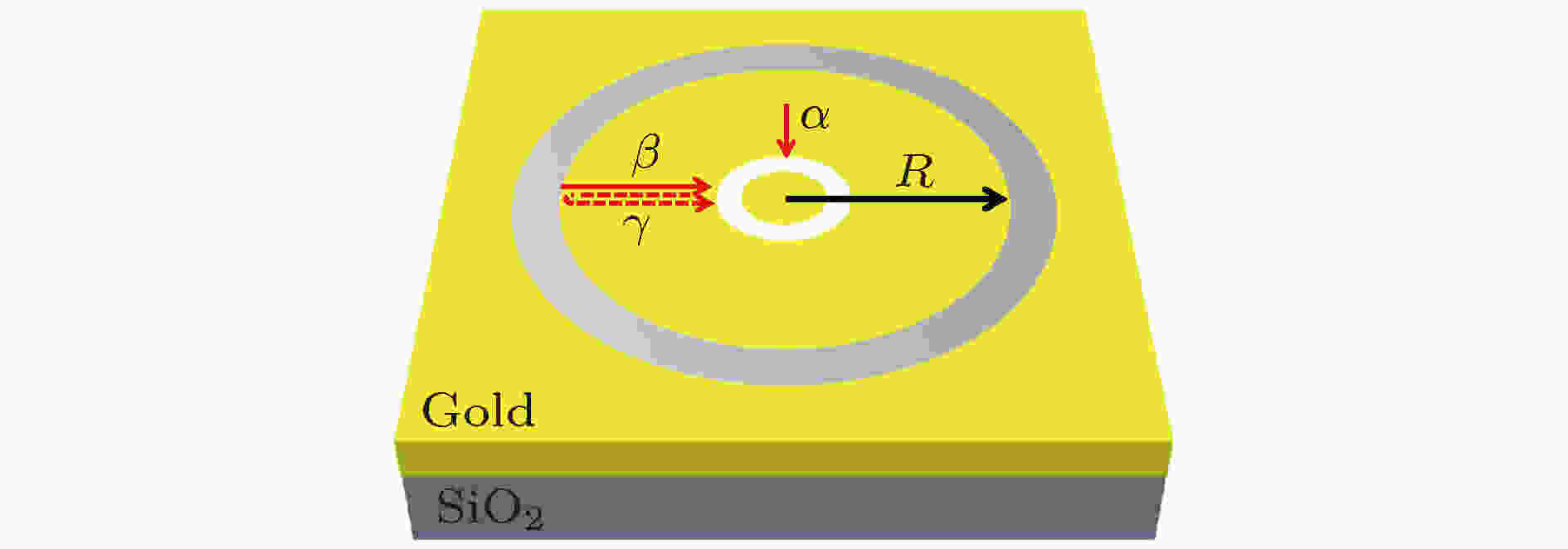
2019, 68 (7): 077801.
doi: 10.7498/aps.68.20182017
Abstract +
The nano groove can highly improve the transmittance of coaxial nanoring aperture due to the excitation of surface plasmon polariton (SPP). The total angular momentum carried by incident beam is reserved in the whole process and transferred to the SPP, thus the vortex SPP carrying orbital angular momentum is generated. The enhanced transmittance of nano aperture by vortex SPP has a wide range of applications, but its physical mechanism has been ignored for a long time. Here we study the process of the enhanced transmittance of the coaxial nanoring aperture and provide a model to describe the process of photon transmission. When the incident light irradiates on the coaxial nanoring aperture and nano groove, the vortex SPP induced by the groove propagates to coaxial nanoring aperture. Some of the photons in the SPP are coupled into the coaxial nanoring aperture and some are reflected back. The reflected photons travel back and forth multiple times between the coaxial nanoring aperture and nano groove. The vortex SPP interacts with the incident beam at the round of coaxial nanoring aperture, which determines the intensity at the round of the coaxial nano aperture, and thus affecting the transmittance. We systematically study the influence of optical angular momentum and the radius of the nano groove on the transmittance of coaxial nanoring aperture by using theoretical analysis and numerical simulations. The results show that the optical angular momentum and radius of the nano groove both affect the radial propagation phase of vortex SPP from nano groove to coaxial nanoring aperture, hence affecting the intensity of the electric field at the round of coaxial nanoring aperture and consequently determine the transmittance. The transmittance peaks of incident beams with different optical angular momenta will appear at different radii of the nano grooves, which provides a potential way to modulate the transmittance by adjusting the radius of the nano groove. This study is instructive for designing the enhanced optical transmission nano device based on vortex SPP.
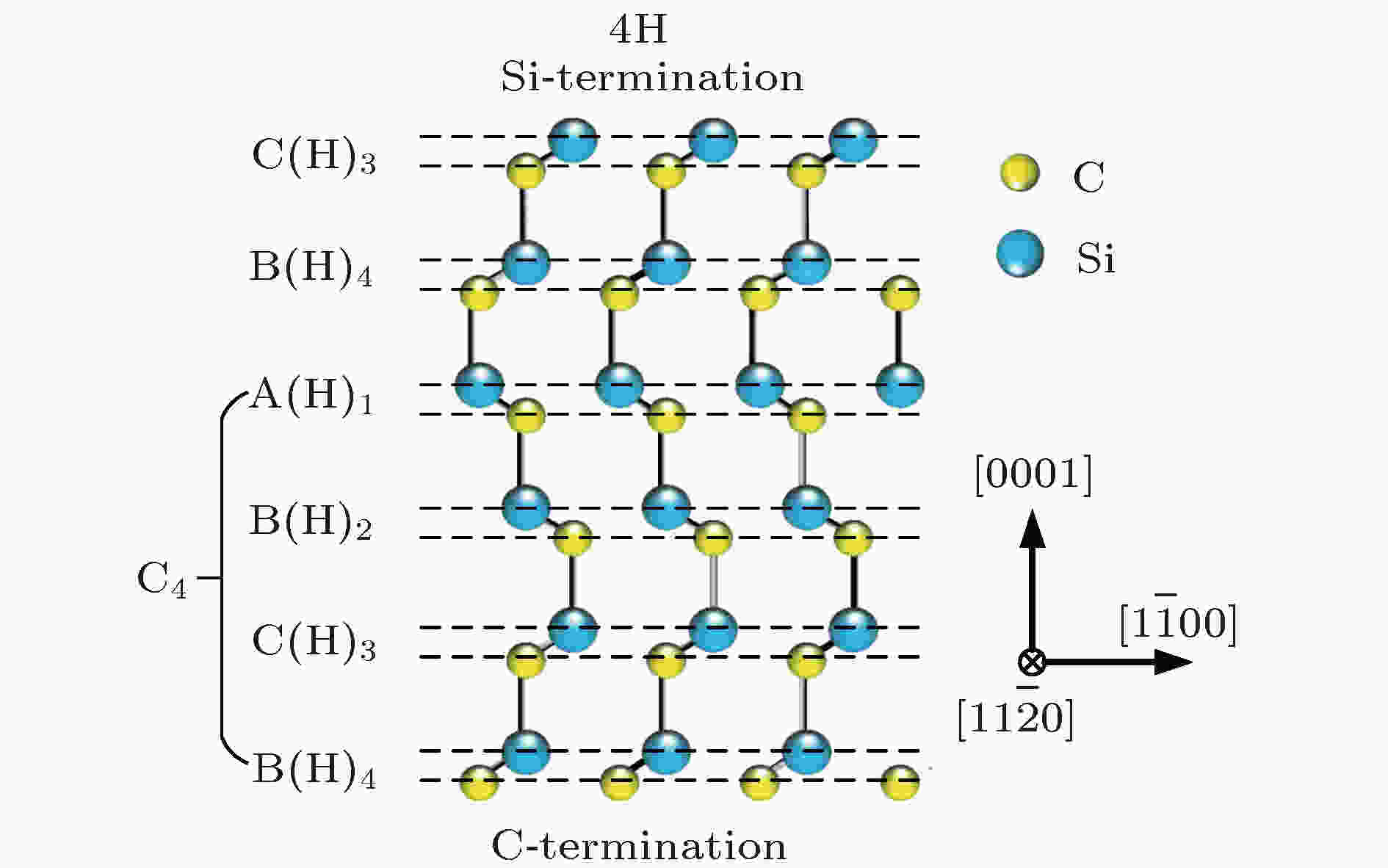
2019, 68 (7): 078101.
doi: 10.7498/aps.68.20182067
Abstract +
Wide-band gap SiC is a promising semiconductor material for microelectronic applications due to its superior electronic properties, high thermal conductivity, chemical and radiation stability, and extremely high break-down voltage. Over the past several years, tremendous advances have been made in SiC crystal growth technology. Nevertheless, SiC will not reach its anticipated potential until a variety of problems are solved, one of the problem is step bunching during step flow growth of SiC, because it could lead to uneven distribution of impurity and less smooth surfaces. In this paper, step bunching morphologies on vicinal 4H-SiC (0001) surfaces with the miscut toward $\left[ {1\bar 100} \right]$ or $\left[ {11\bar 20} \right]$ directions are studied with a three-dimensional kinetic Monte Carlo model, and then compared with the analytic model based on the theory of Burton-Cabera-Frank. In the kinetic Monte Carlo model, based on the crystal lattice of 4H-SiC, a lattice mesh is established to fix the positions of atoms and bond partners. The events considered in the model are adsorption and diffusion of adatoms on the terraces, attachment, detachment and interlayer transport of adatoms at the step edges. The effects of Ehrlich-Schwoebel barriers at downward step edges and inverse Schwoebel barrier at upwards step edges are also considered. In addition, to obtain more elaborate information about the behavior of atoms in the crystal surface, silicon and carbon atoms are treated as the minimal diffusing species. Finally, the periodic boundary conditions are applied to the lateral direction while the " helicoidal boundary conditions” are used in the direction of crystal growth. The simulation results show that four bilayer-height steps are formed on the vicinal 4H-SiC (0001) surfaces with the miscut toward $\left[ {1\bar 100} \right]$ direction, while along the $\left[ {11\bar 20} \right]$ direction, only bunches with two-bilayer-height are formed. Moreover, zigzag shaped edges are observed for 4H-SiC (0001) vicinal surfaces with the miscut toward $\left[ {11\bar 20} \right]$ direction. The formation of these step bunching morphologies on vicinal surfaces with different miscut directions are related to the extra energy and step barrier. The different extra energy for each bilayer plane results in step bunches with two-bilayer-height on the vicinal 4H-SiC (0001) surface. And the step barriers finally lead to the formation of step bunches with four-bilayer-height. Finally, the formation mechanism of the stepped morphology is also analyzed by a one-dimensional Burton-Cabera-Frank analytic model. In the model, the parameters are corresponding to those used in the kinetic Monte Carlo model, and then solved numerically. The evolution characteristic of step bunching calculated by the Burton-Cabera-Frank model is consistent with the results obtained by the kinetic Monte Carlo simulation.
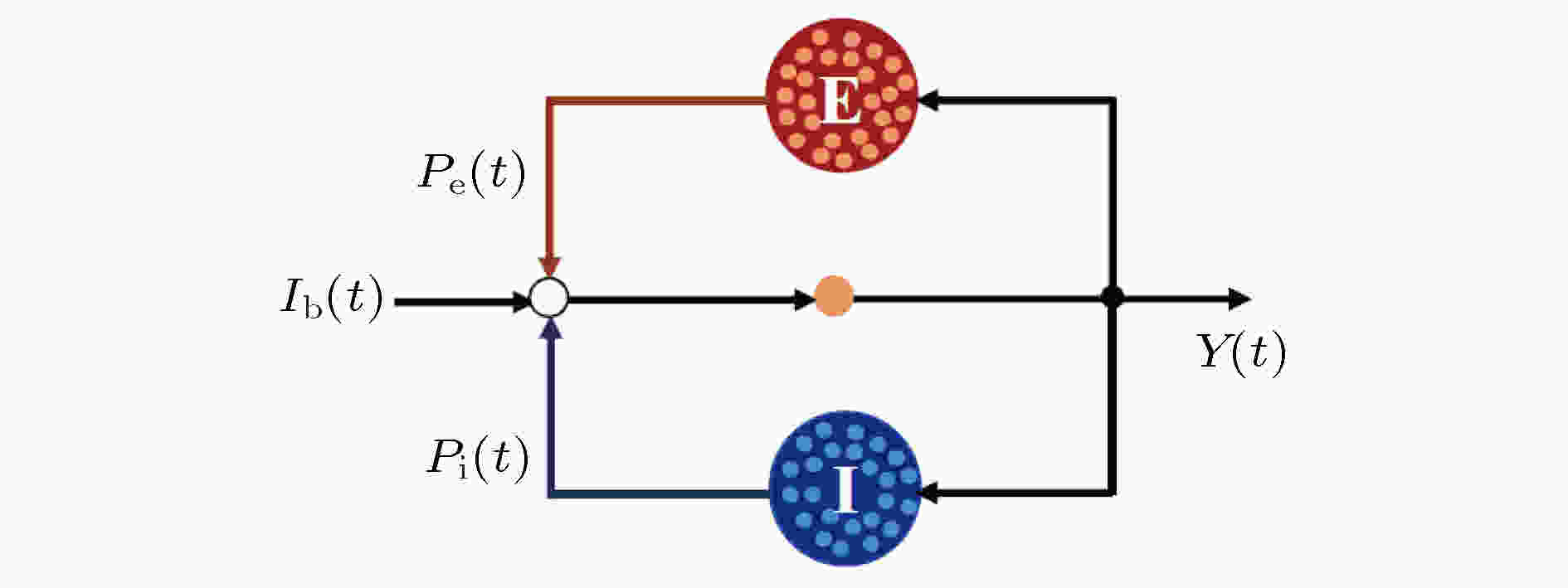
2019, 68 (7): 078701.
doi: 10.7498/aps.68.20182234
Abstract +
Neural firing rate homeostasis, as an important feature of neural electrical activity, means that the firing rate in brain is maintained in a relatively stable state, and fluctuates around a constant value. Extensive experimental studies have revealed that the firing rate homeostasis is ubiquitous in brain, and provides a base for neural information processing and maintaining normal neurological functions, so that the research on neural firing rate homeostasis is a central problem in the field of neuroscience. Cortical neural network is a highly complex dynamic system with a large number of input disturbance signals and parameter perturbations due to dynamic connection. However, it remains to be further investigated how firing rate homeostasis is established in cortical neural network, furthermore, maintains robustness to these disturbances and perturbations. The feedback neural circuit with recurrent excitatory and inhibitory connection is a typical connective pattern in cortical cortex, and inhibitory synaptic plasticity plays a crucial role in achieving neural firing rate homeostasis. Here, by constructing a feedback neural network with inhibitory spike timing-dependent plasticity (STDP), we conduct a computational research to elucidate the mechanism of neural firing rate homeostasis. The results indicate that the neuronal firing rate can track the target firing rate accurately under the regulation of inhibitory synaptic plasticity, thus achieve firing rate homeostasis. In the face of external disturbances and parameter perturbations, the neuron firing rate deviates transiently from the target firing rate value, and converges to the target firing rate value at a steady state, which demonstrates that the firing rate homeostasis established by the inhibitory synaptic plasticity can maintain strong robustness. Furthermore, the analytical research qualitatively explains the firing rate homeostasis mechanism underlined by inhibitory synaptic plasticity. Finally, the simulations further demonstrate that the learning rate value and the firing rate set point value also exert a quantitative influence on the firing rate homeostasis. Overall, these findings not only gain an insight into the firing rate homeostasis mechanism underlined by inhibitory synaptic plasticity, but also inspire testable hypotheses for future experimental studies.

2019, 68 (7): 078801.
doi: 10.7498/aps.68.20182221
Abstract +
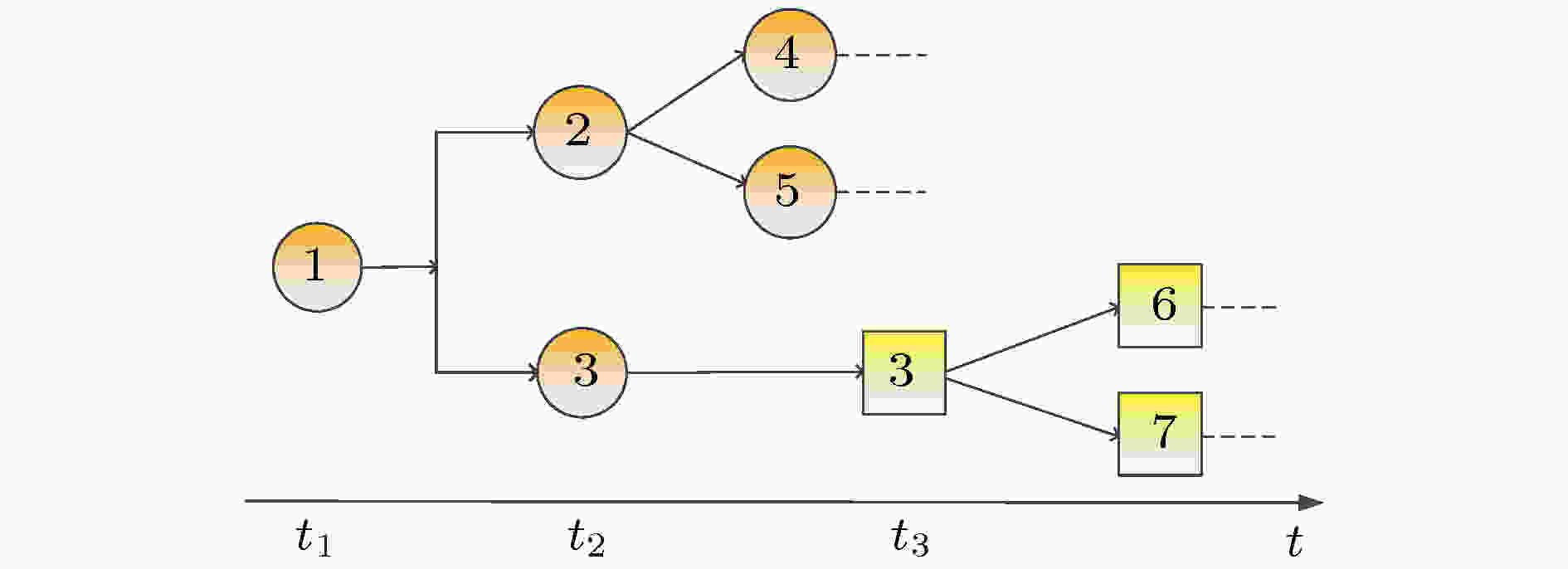
2019, 68 (7): 078901.
doi: 10.7498/aps.68.20181948
Abstract +
In the age of Web 2.0, modeling and predicting the popularity of online information was an important issue in information dissemination. Online social medium greatly affects the way we communicate with each other. However, little is known about what fundamental mechanisms drive the dynamical information flow in online social systems. To address this problem, we develop a theoretical probabilistic model based on branching process to characterize the process in which micro-blog information gains its popularity. Firstly, the data of information popularity and network structure of micro-blog network are analyzed. The statistical results show that the attenuation of information popularity follows a scaling law whose exponent is 1.8, and in-degree and out-degree of micro-blog network each also obey a power law distribution whose exponent is 1.5. The results of power law distribution show that there is a high-degree heterogeneity in a micro-blog system. The proportion of micro-blog information with popularity less than 100 is 95.8%, while the amount of micro-blog information with popularity more than 10, 000 is very small. The number of fans (in-degree) less than 100 accounts for 56.4%, while some users have millions of fans.Secondly, according to the design mechanism of the Weibo system, we assume that each user has two lists, i.e. a "home page list" and a "personal page list". Meanwhile, each user has two states at each moment: generating a new message with probability ${\mu} $ to be sent out; 2) or forwarding the information already on the "personal page list" with probability $ (1-{\mu}) $ . Based on the assumptions, the information popularity model is proposed. Finally, the model is simulated. The simulation results show that the model can reproduce some features of real social network data, and the popularity of information is related to the network structure. By solving the model equation, the results of theoretical prediction are consistent with the simulation analyses and actual data.

2019, 68 (7): 078902.
doi: 10.7498/aps.68.20182258
Abstract +
Modern systems are always coupled. Previous studies indicate that coupled systems are more fragile than single systems. In a single system, when a fraction of 1-p nodes are removed, the percolation process is often of the second order. In a coupled system, due to the lack of resilience, the phase transition is always of the first order when removing a fraction of nodes. Most of previous studies on coupled systems focus on one-to-one dependency relation. This kind of relationship is called a no-feedback condition. Existing studies suppose that coupled systems are much more fragile without a no-feedback condition. That is to say, if a node depends on more than one node, the coupled system will breakdown even when a small fraction of nodes are removed from the coupled system. By observing the real world system, real nodes are often dependent on a dependency cluster, which consists of more than one other node. For example, in an industry chain, an electronic equipment factory may need several raw material factories to supply production components. Despite part of the raw material factories being bankrupt, the electronic equipment factory can carry out productionnormally because the remaining raw material factories still supply the necessary production components. But theoretical analysis shows that the robustness of such a coupled system is worse than that of one-to-one dependency system. Actually, the coupled system in real world does not usually disintegrate into pieces after some nodes have become invalid. To explain this phenomenon, we model a coupled system as interdependent networks and study, both analytically and numerically, the percolation in interdependent networks with conditional dependency clusters. A node in our model survives until the number of failed nodes in its dependency cluster is greater than a threshold. Our exact solutions of giant component size are in good agreement with the simulation results. Though our model does not have second order phase transition, we still find ways to improve the robustness of interdependent networks. One way is to increase the dependency cluster failure threshold. A higher threshold means that more nodes in the dependency cluster can be removed without breaking down the node depending on the cluster. Other way is to increase the size of dependency clusters, the more the nodes in the dependency cluster, the more the failure combinations are, which increases the survival probability of the node depending on cluster. Our model offers a useful strategy to enhance the robustness of coupled system and makes a good contribution to the study of interdependent networks with dependency clusters.
GENERAL
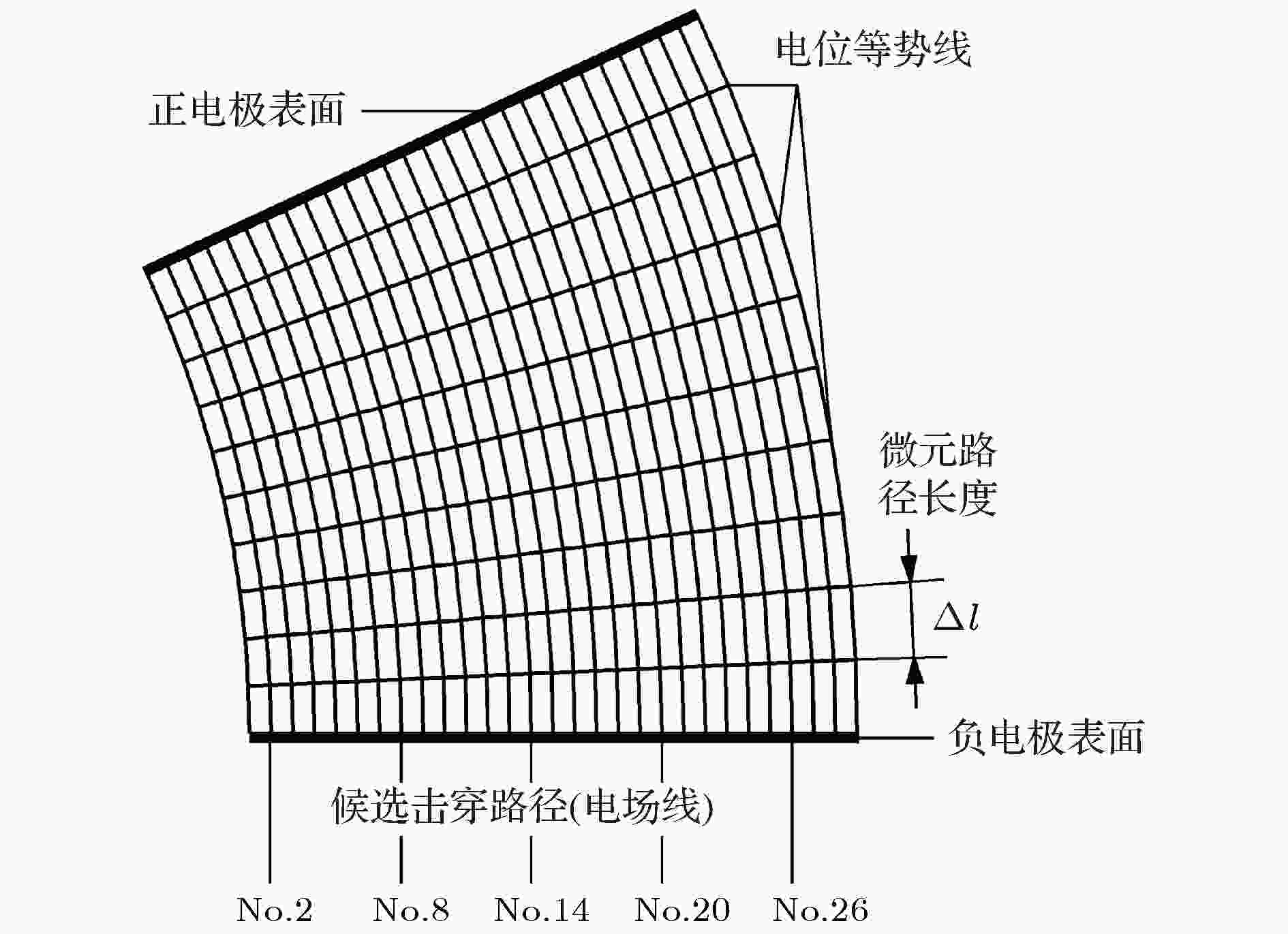
2019, 68 (7): 070201.
doi: 10.7498/aps.68.20181999
Abstract +
The determination of the critical breakdown path in slightly uneven electric field has played a significant role in gas discharge starting process and electrode surface erosion. In order to study the law of the critical path position in the low-pressure breakdown case, a new algorithm based on the Monte-Carlo collision model and the postulation of " forward-back trajectory for electrons” is established, namely the determination of the critical path(DCP) model. In the DCP model, some electric field lines among the electrodes are regarded as the potential breakdown paths, and the probability of the excitation and ionization collisions between the electrons and the neutrals can be obtained by the Monte-Carlo model. The most probable path to trigger the breakdown will be selected from among all the potential paths, namely the critical breakdown path, and the corresponding breakdown voltage of the critical path will be calculated. A breakdown test with two different electrode devices is performed to examine the accuracy of the DCP model: the critical path and breakdown voltage obtained by the DCP could be examined respectively by capturing the surface traces of negative electrode and measuring the breakdown voltage. According to the test results, the critical breakdown path can transit at different gap pressures or flow rates, and this observation is qualitatively consistent with the calculation results. Meanwhile, the relative error maximum of the breakdown voltage obtained by DCP is less than 7.9%. The accuracy of the DCP model partly depends on the background pressure, and the background pressure in the application case should be less than 103 Pa. Based on the DCP model, the numerical analyses of another four electrode devices are conducted to acquire the common law about the critical breakdown path. According to the calculation results, the transition zone has both a high frequency of critical path transition and a " fluctuant and similarly straight” breakdown voltage curve with the gap pressure or flow rate increasing, and the critical path transition direction follows the rule of " from longer paths to shorter paths”. Lastly, the inherent laws of those regulations about the critical path are revealed by the DCP model.
Original Articles
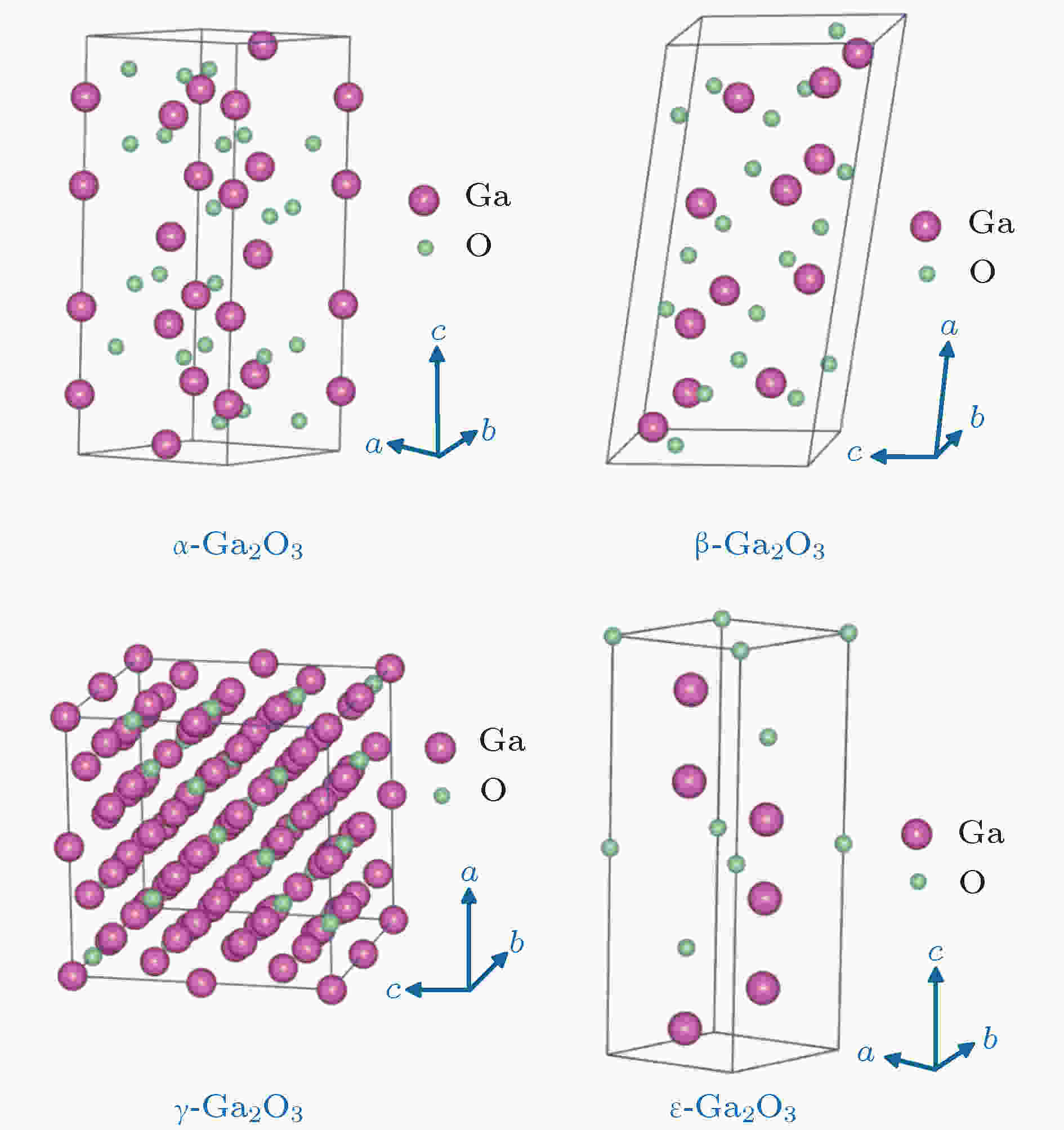
2019, 68 (7): 078501.
doi: 10.7498/aps.68.20181845
Abstract +
Gallium oxide (Ga2O3), with a bandgap of about 4.9 eV, is a new type of ultra-wide bandgap semiconductor material. The Ga2O3 can crystallize into five different phases, i.e. α, β, γ, δ, and ε-phase. Among them, the monoclinic β-Ga2O3 (space group: C2/m) with the lattice parameters of a = 12.23 Å, b = 3.04 Å, c = 5.80 Å, and β = 103.7° has been recognized as the most stable phase. The β-Ga2O3 can be grown in bulk form from edge-defined film-fed growth with a low-cost method. With a high theoretical breakdown electrical field (8 MV/cm) and large Baliga’s figure of merit, the β-Ga2O3 is a potential candidate material for next-generation high-power electronics (including diode and field effect transistor) and extreme environment electronics [high temperature, high radiation, and high voltage (low power) switching]. Due to a high transmittance to the deep ultraviolet-visible light with a wavelength longer than 253 nm, the β-Ga2O3 is a natural material for solar-blind ultraviolet detection and deep-ultraviolet transparent conductive electrode. In this paper, the crystal structure, physical properties and device applications of Ga2O3 material are introduced. And the latest research progress of β-Ga2O3 in deep ultraviolet transparent conductive electrode and solar-blind ultraviolet photodetector are reviewed. Although Sn doped Ga2O3 thin film has a conductivity of up to 32.3 S/cm and a transmittance greater than 88%, there is still a long way to go for commercial transparent conductive electrode. At the same time, the development history of β-Ga2O3 solar-blind ultraviolet photodetectors based on material type (nanometer, single crystal and thin film) is described in chronological order. The photodetector based on quasi-two-dimensional β-Ga2O3 flakes shows the highest responsivity (1.8 × 105 A/W). The photodetector based on ZnO/Ga2O3 core/shell micron-wire has a best comprehensive performance, which exhibits a responsivity of 1.3 × 103 A/W and a response time ranging from 20 ${\text{μ}}{\rm{s}}$ to 254 nm light at –6 V. We look forward to applying the β-Ga2O3 based solar-blind ultraviolet photodetectors to military (such as: missile early warning and tracking, ultraviolet communication, harbor fog navigation, and so on) and civilian fields (such as ozone hole monitoring, disinfection and sterilization ultraviolet intensity monitoring, high voltage corona detection, forest fire ultraviolet monitoring, and so on).


























